Puglia - Italy's South at its Best

A recent wedding invitation gave me the opportunity to explore the south of Italy a bit more, specifically the region of Apulia, or Puglia in the native language. 2 days of driving from Bari through Polignano a Mare, the Grotte di Castellana, Alberobello with its Trulli houses, and the white city of Ostuni gives you a great impression of the typical architecture, cityscape, and nature around this part of Italy.

Polignano a Mare
One of the most famous towns on the coast of Apulia, with the Lama Monachile, also known as Cala Porto, beach area surrounded by cliffs and houses.
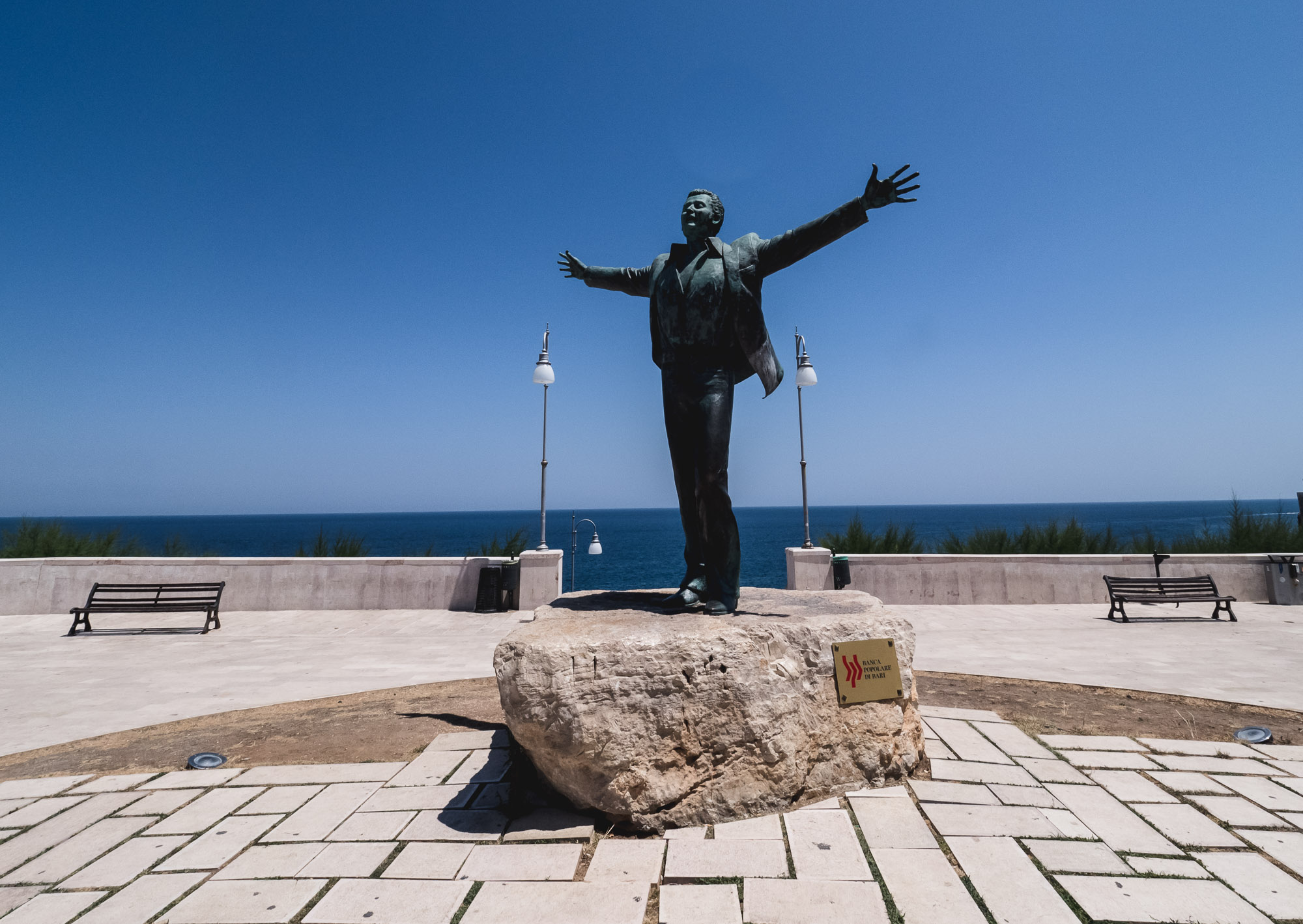
Statua di Domenico Modugno
Famous for the song Nel blu, dipinto di blu - or commonly known as "Volare".

Coast View
The view from the northern cliffs towards the cirty.
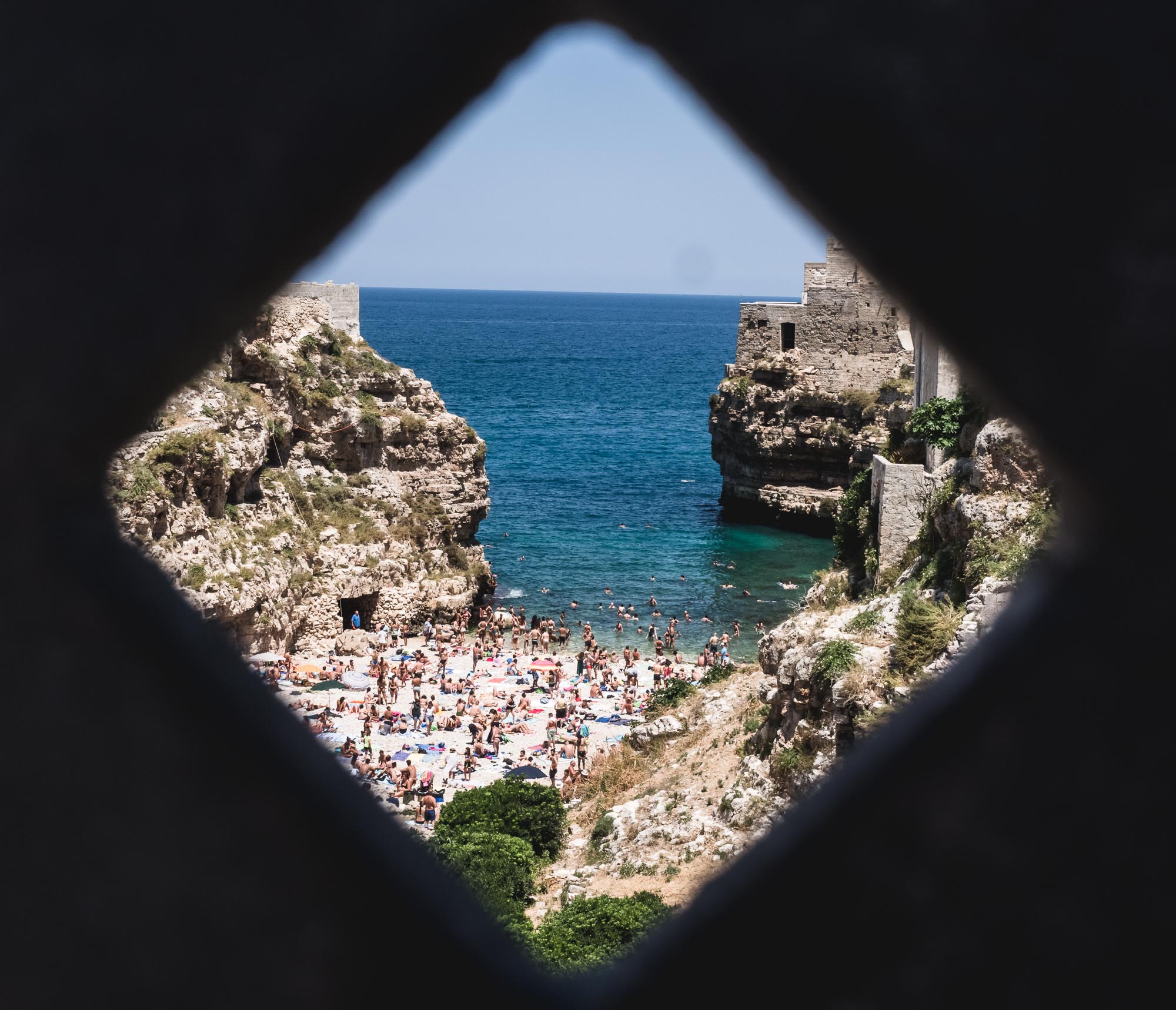
Postcard Beach
The city's most famous spot, seen through the rails of the Roman bridge.
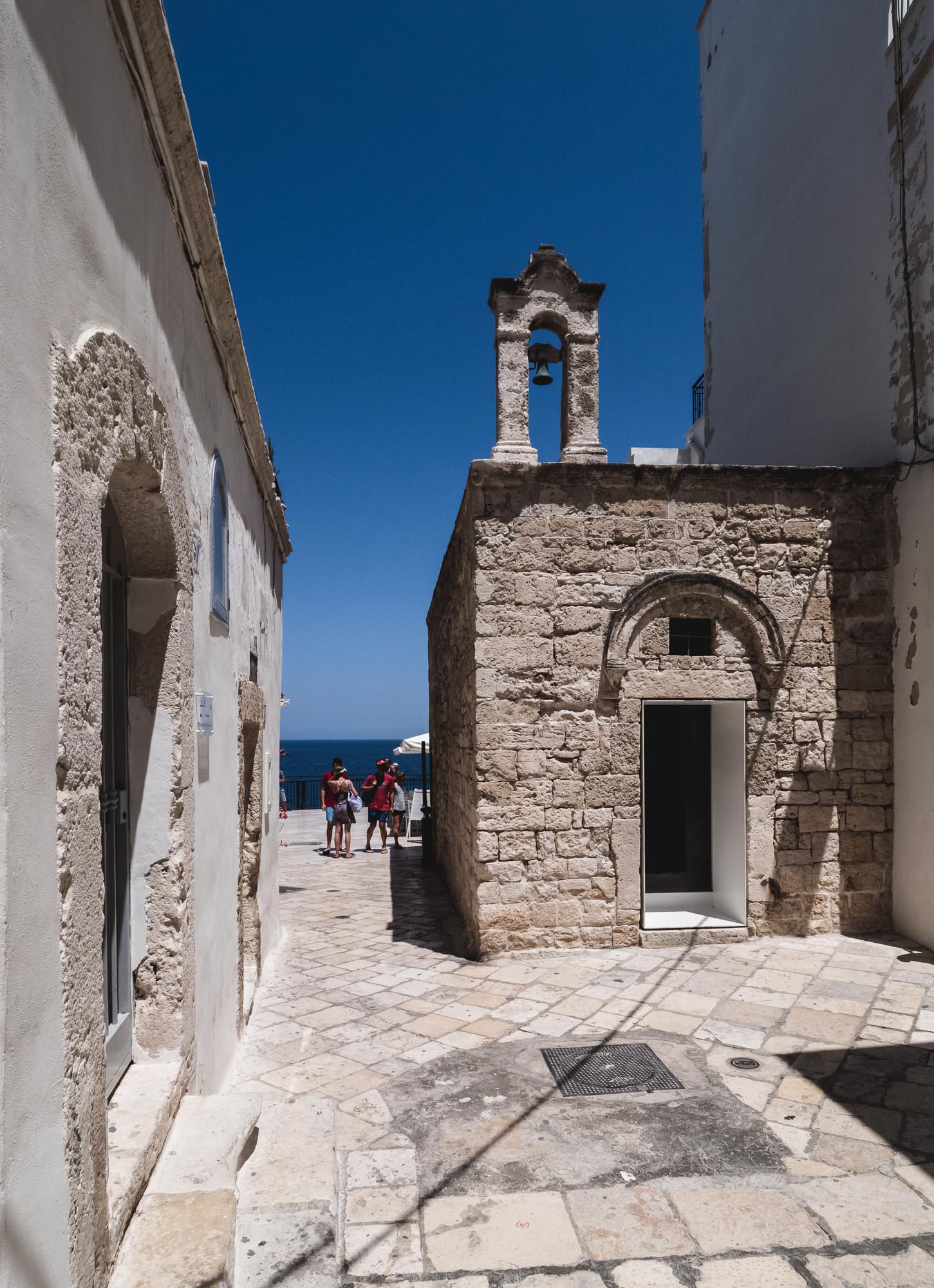
Little Church
A tiny church in the older parts of Polignano a Mare.
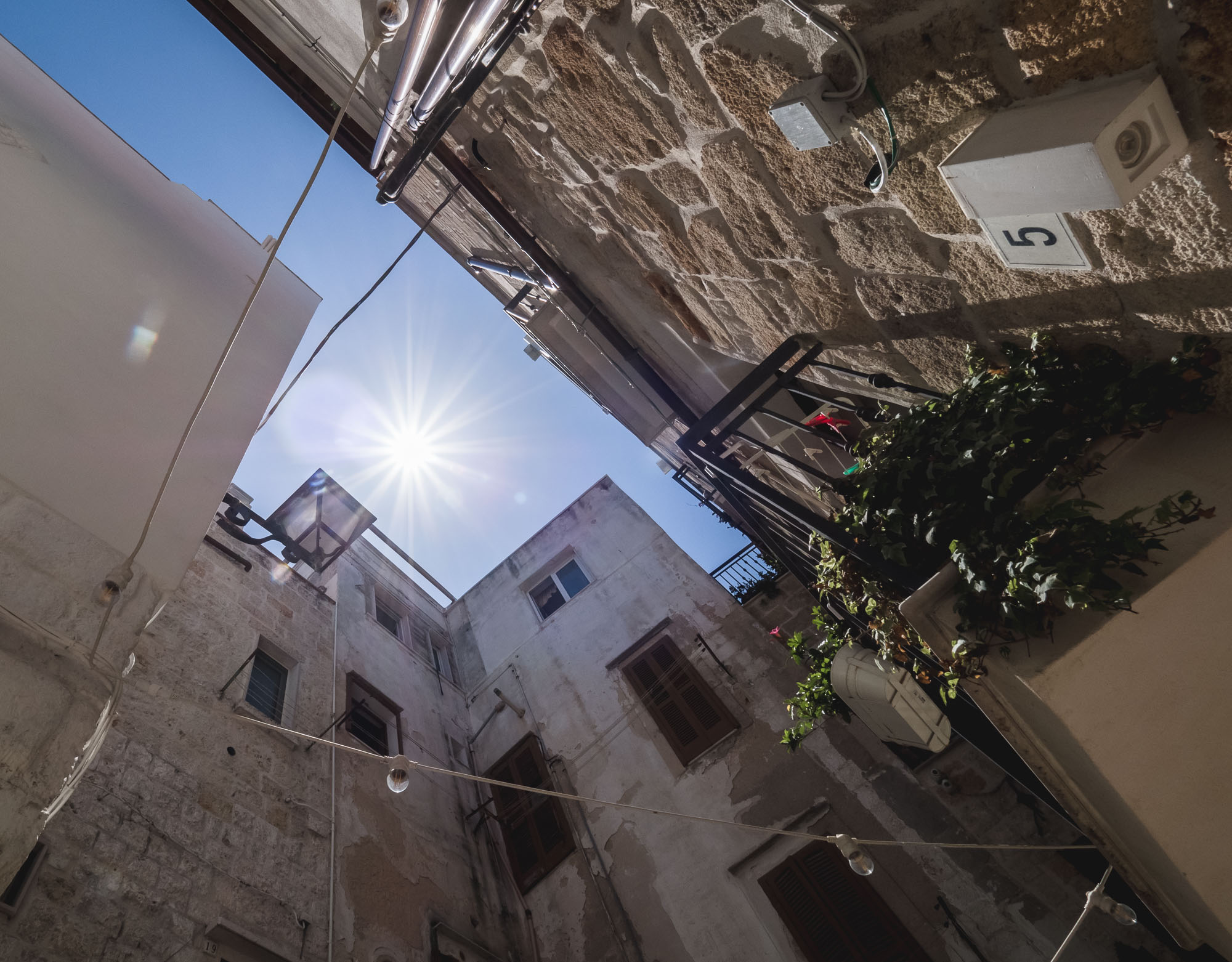
Up
Looking towards the sky between the tightly built houses.
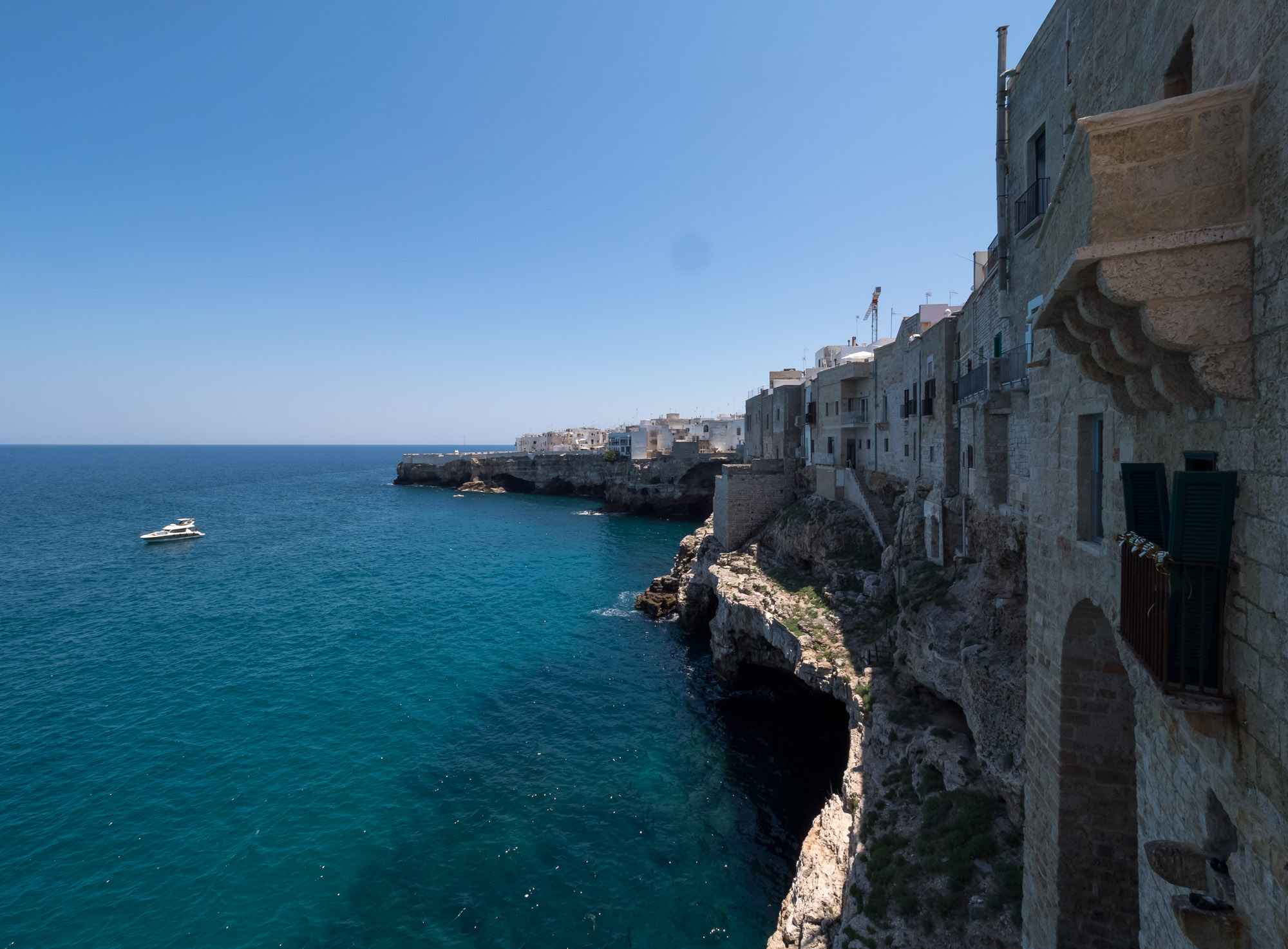
Cliffs
There are many small balconies and other spots in the city to enjoy these views.
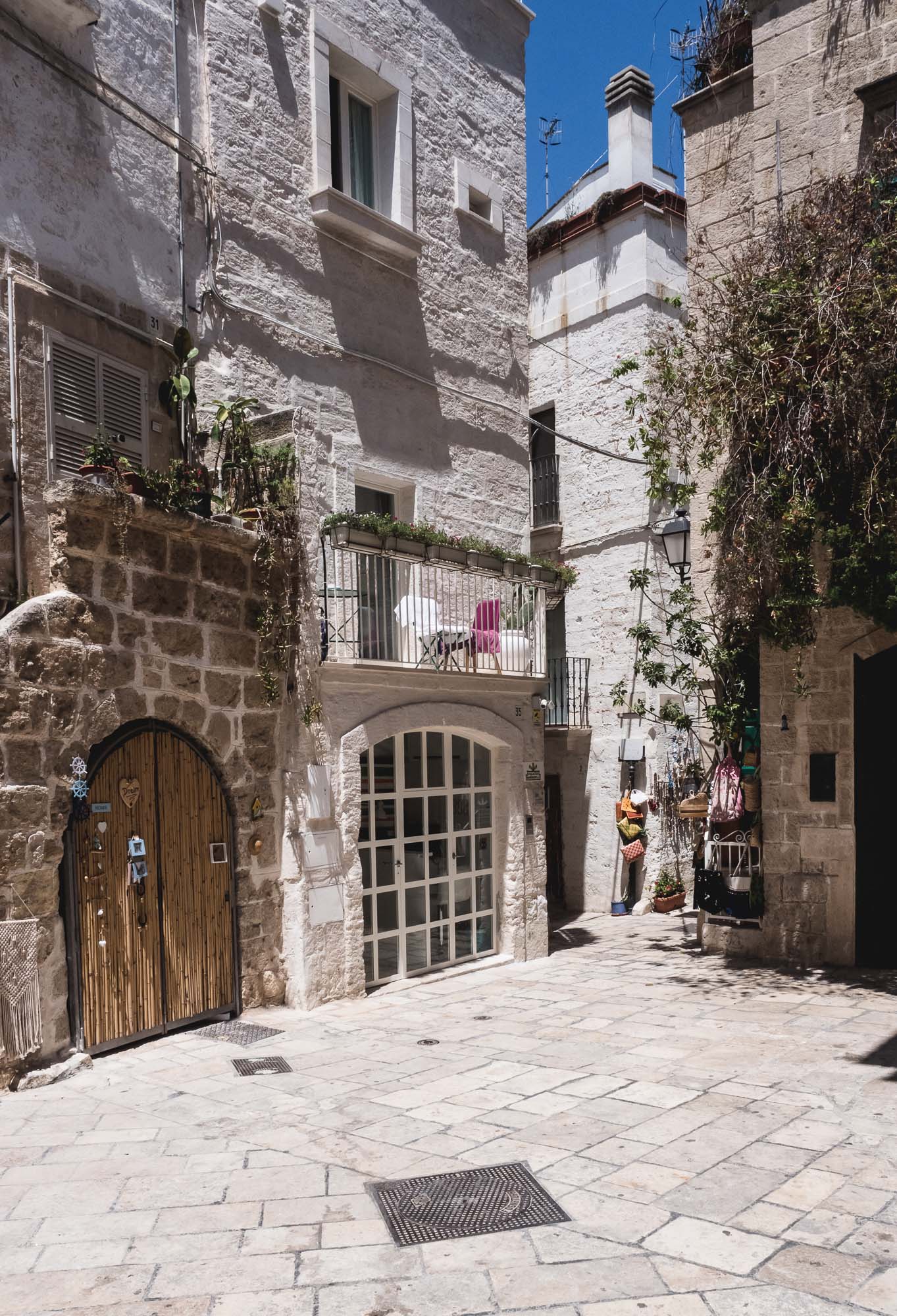
Cityscpe
Typical southern Italy impressions.
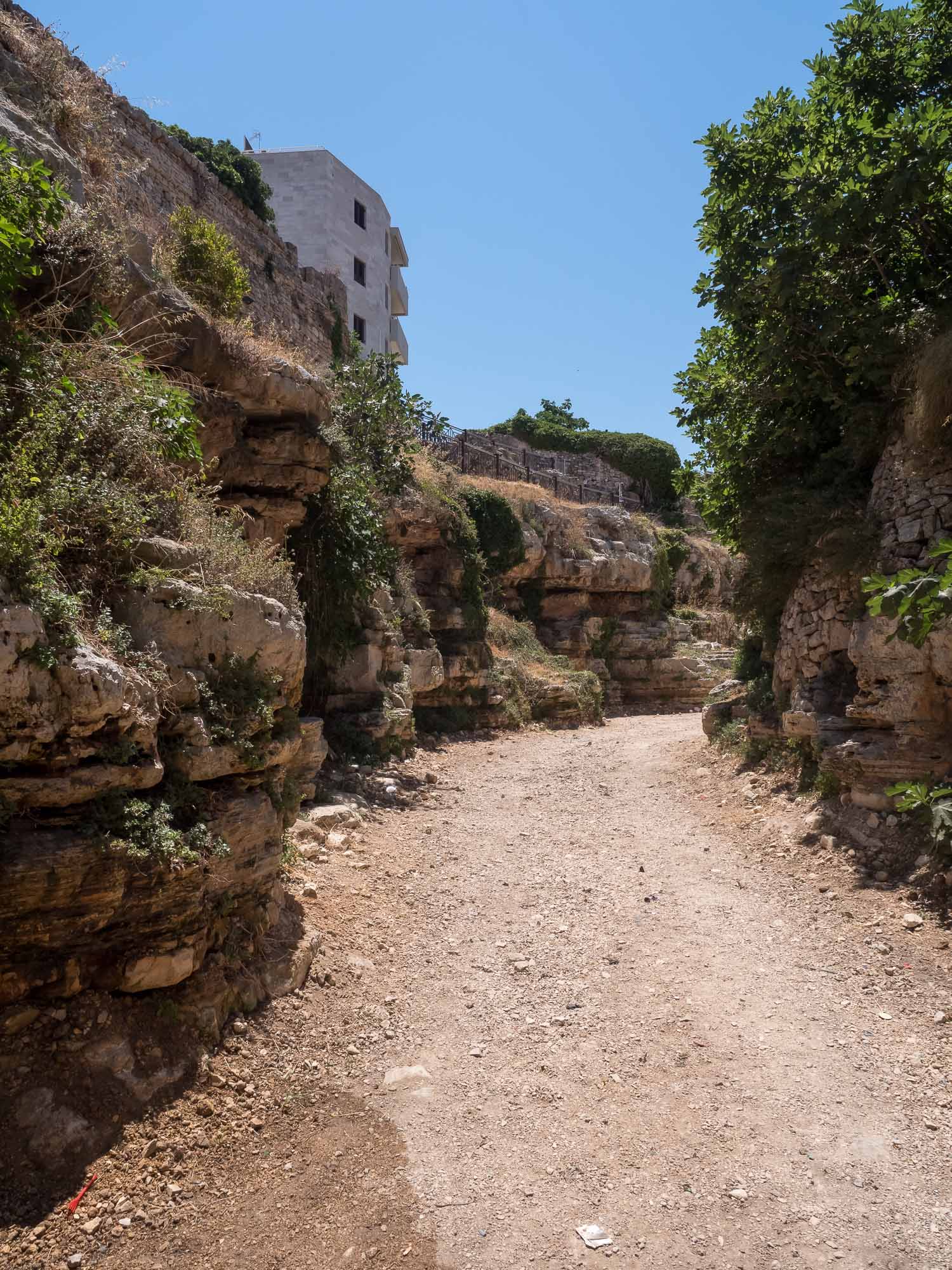
Riverbed
What I presume is a riverbed that was once flowing into the sea, and now leads to the famous beach, crossed by the Roman bridge.

Roman Bridge
The aforementioned bridge connecting two parts of the city.
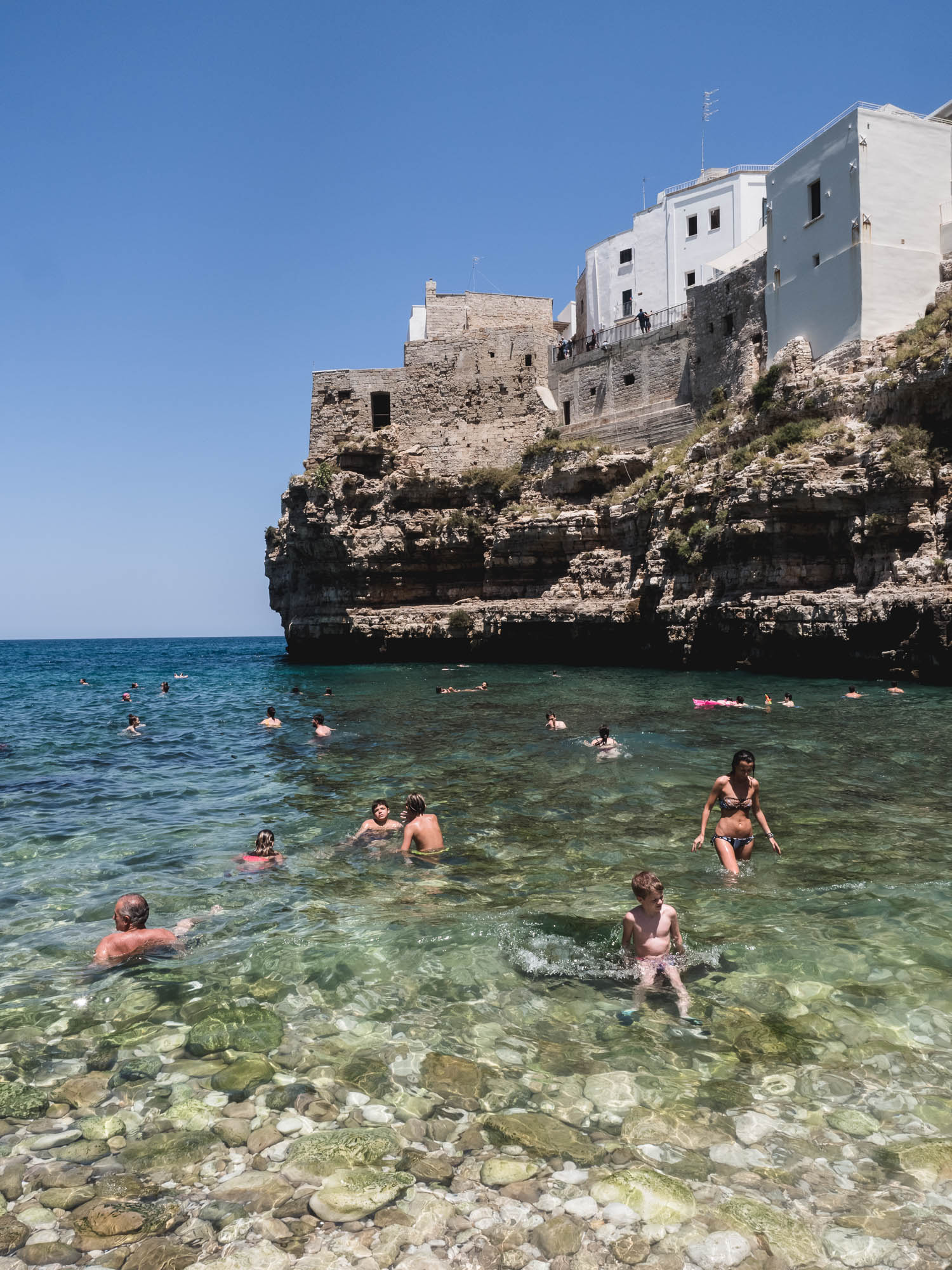
The Adriatic Sea
Beautiful water and good temperatures in July.

Unnatural Cliffs
Built on top the actual limestone rock are the houses framing the famous beach.
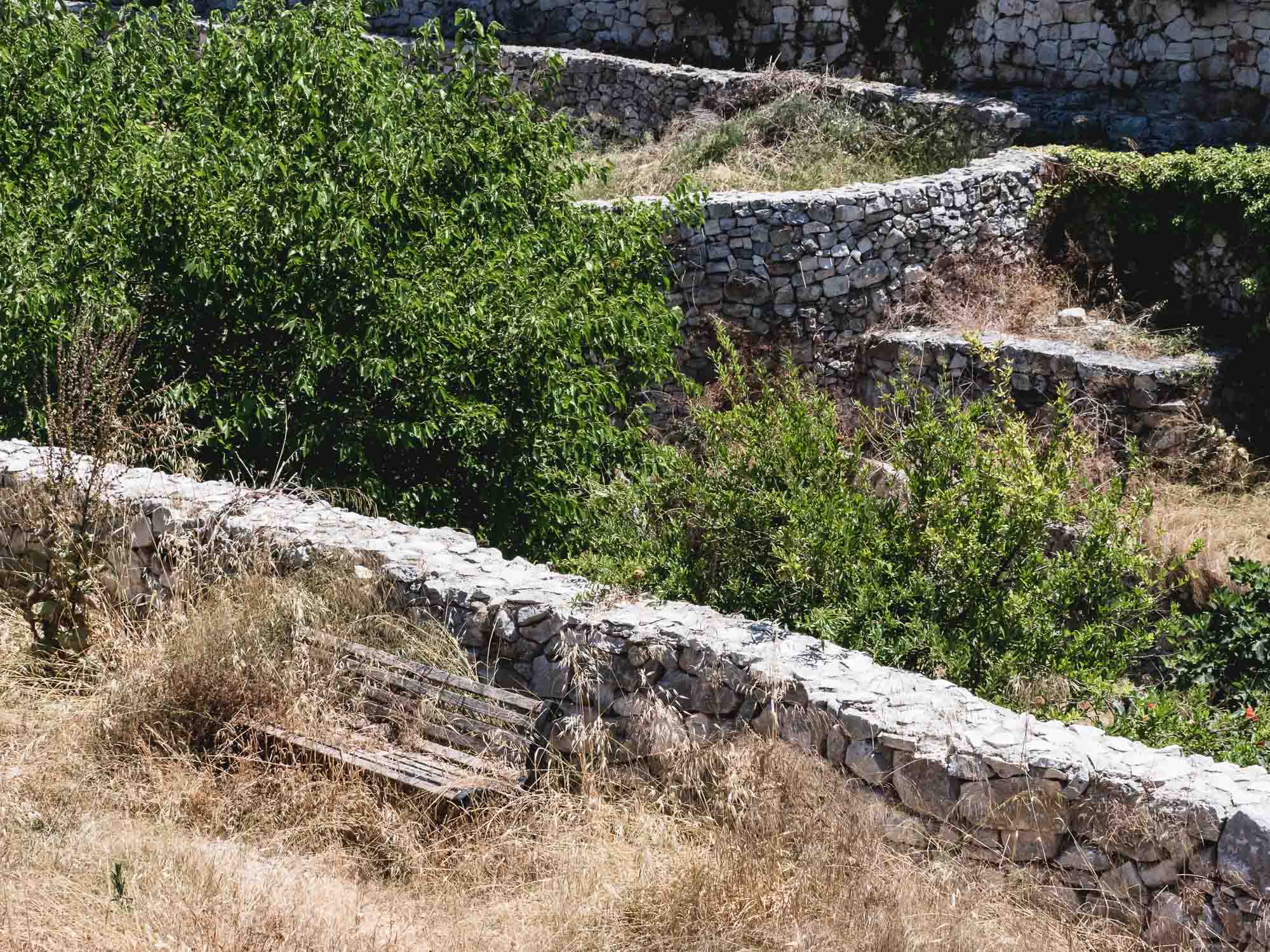
Unused
No one has been sitting here in a while.

Don't Come Closer
Obligatory cat photo, as I moved on from Polignano a Mare to the Grotte di Castellana.
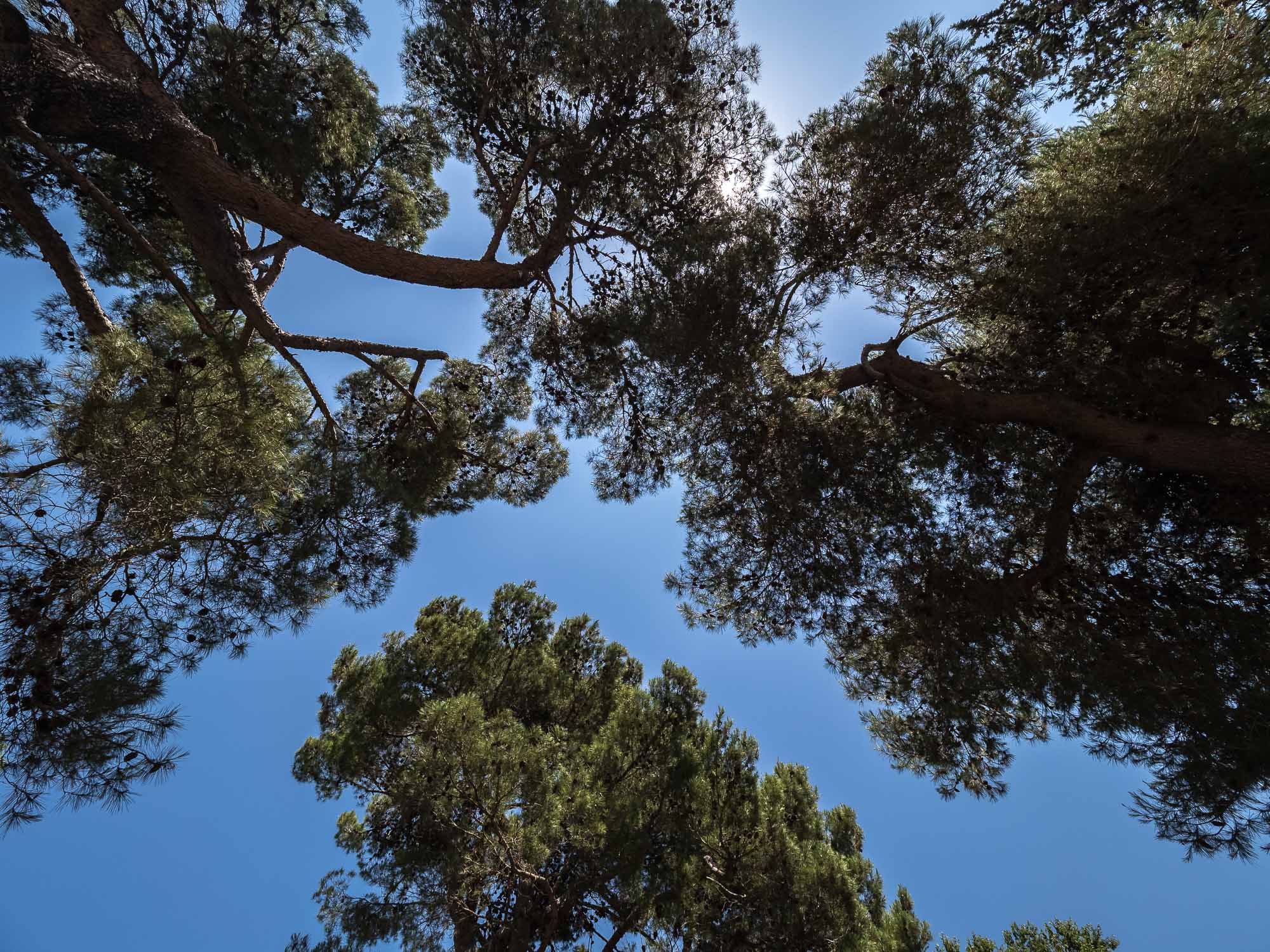
Trees
While Dubai does have more greenery than one would expect, you do miss this kind of view from time to time.
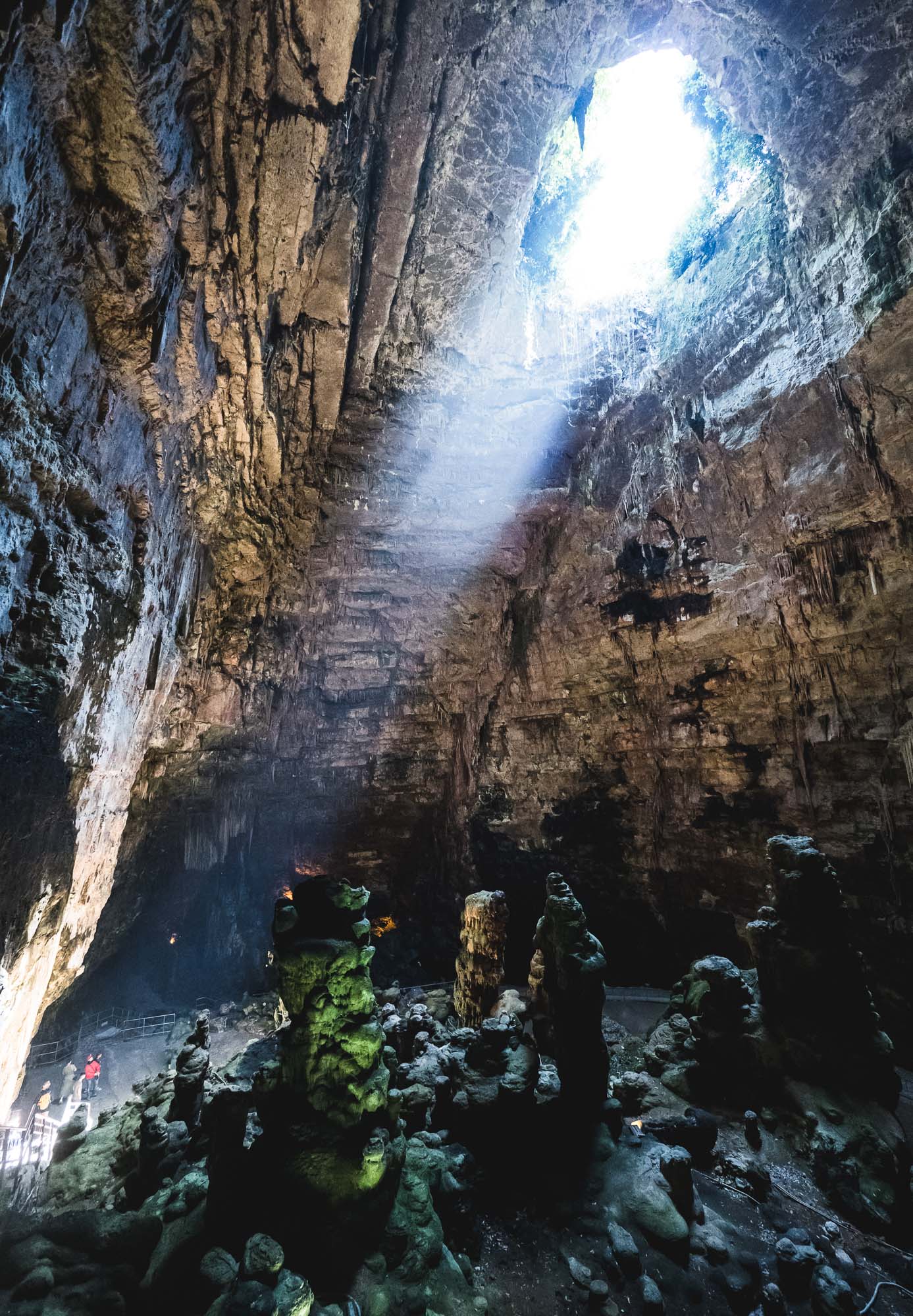
Grotte di Castellana
The main cave of the system, which is 3km overall. It's the only one with an opening to the outside, and also the only one you can take photos in.
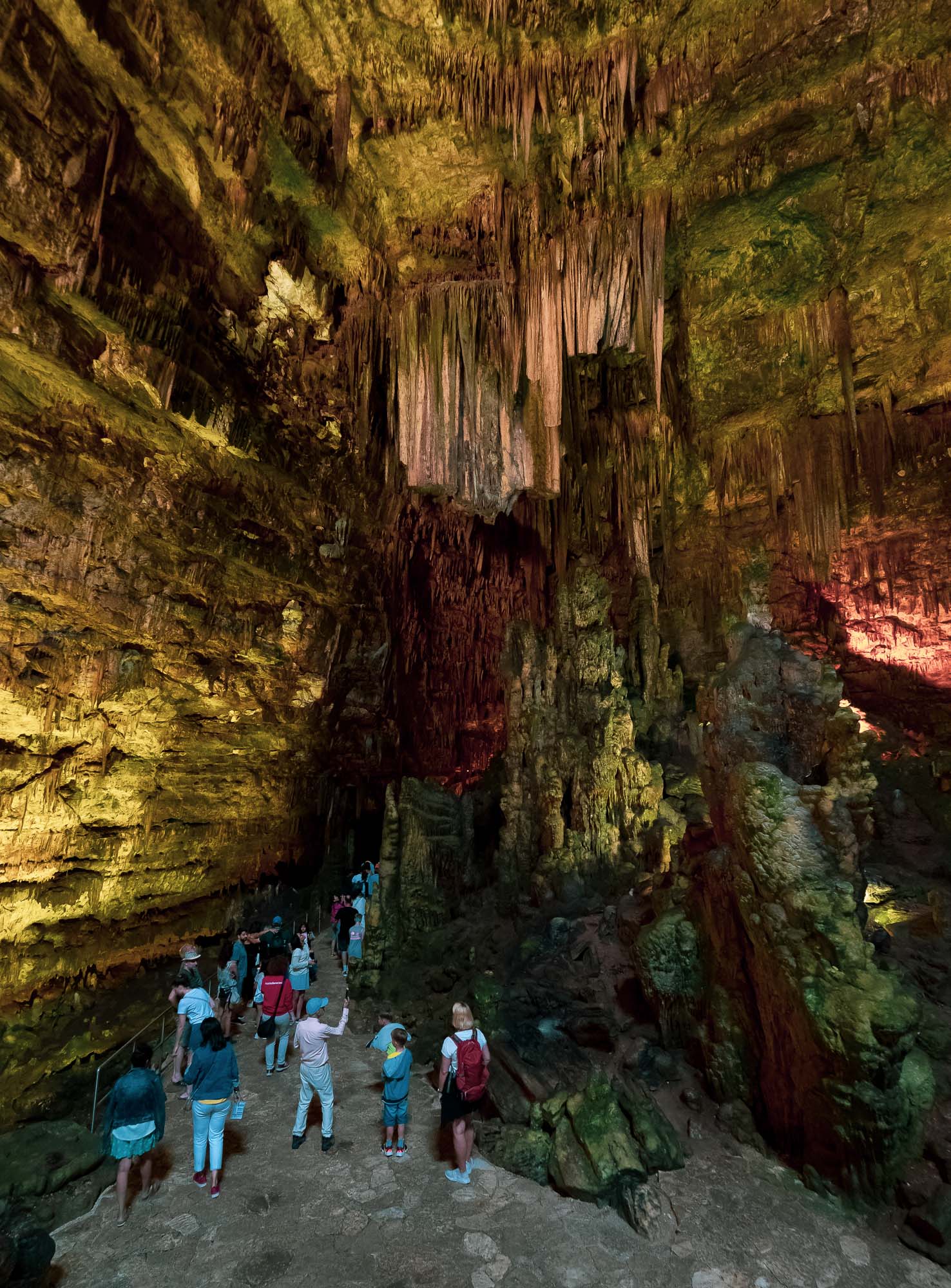
Stalactites and stalagmites embellish almost every wall in the caves. Humans for scale...
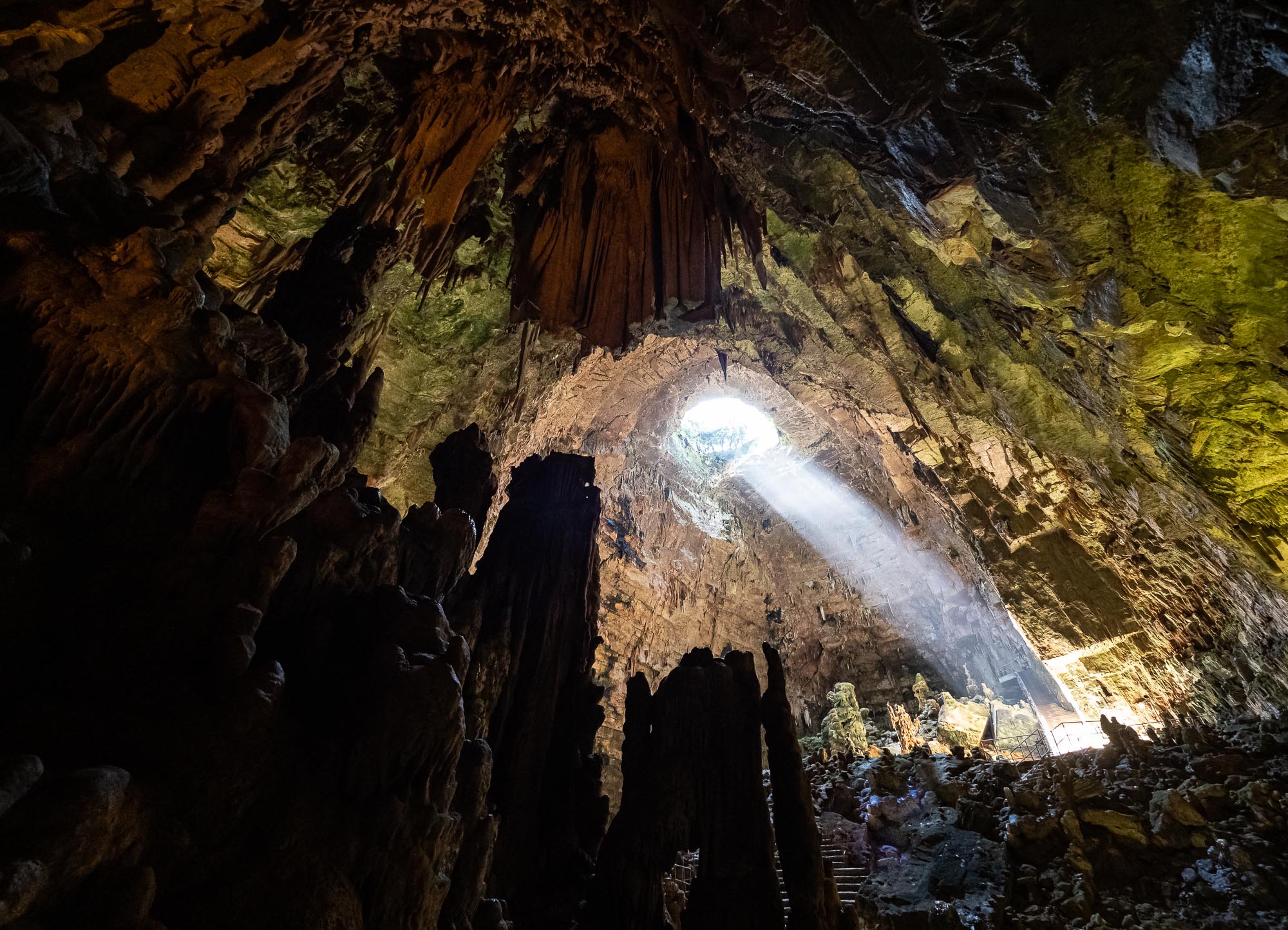
Backward
Looking backward to the main cave as you descend deeper.
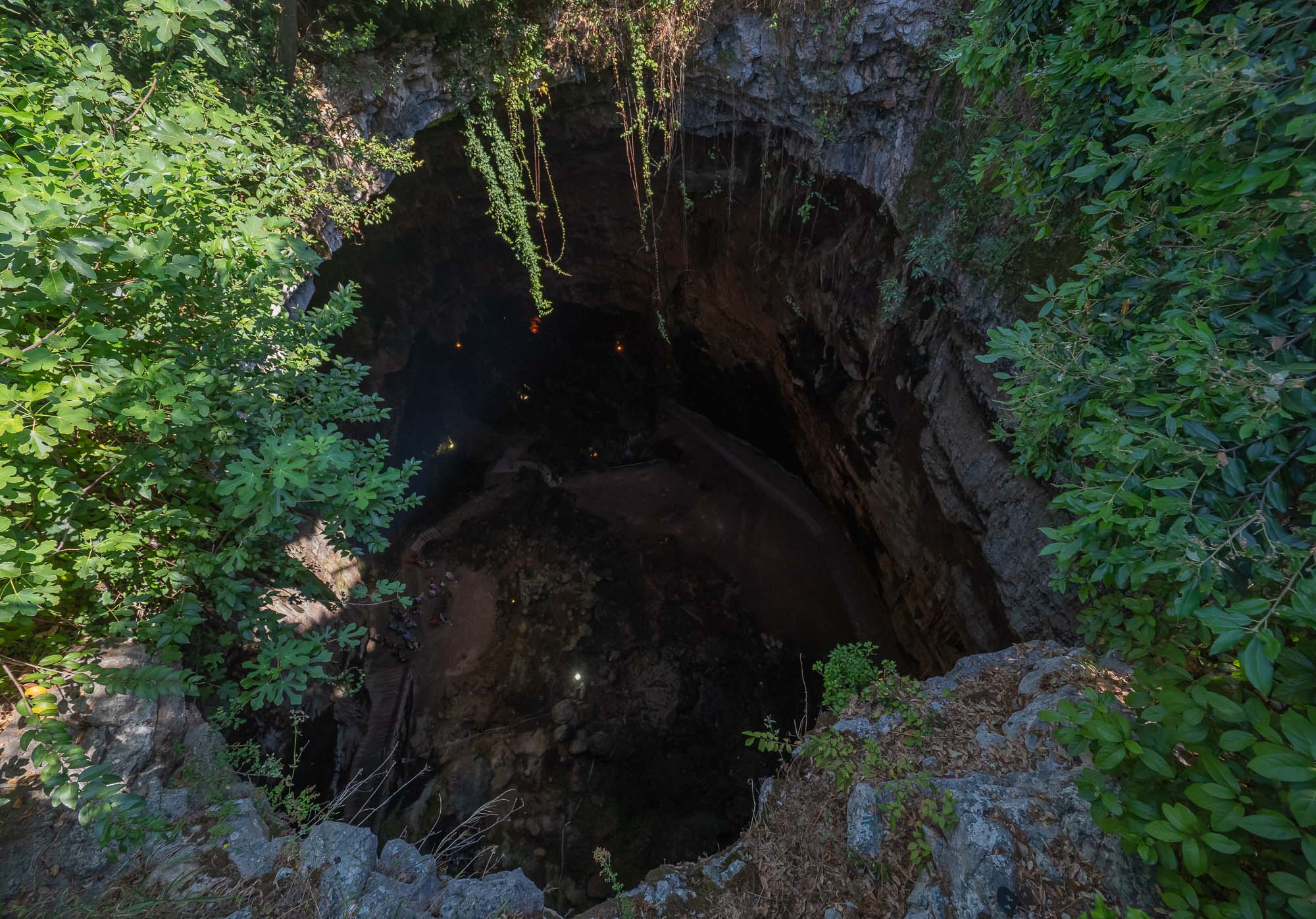
Downwards
This is the hole connecting the main cave to the outside world - it's hidden by trees and bushes, but can be viewed directly from the street.
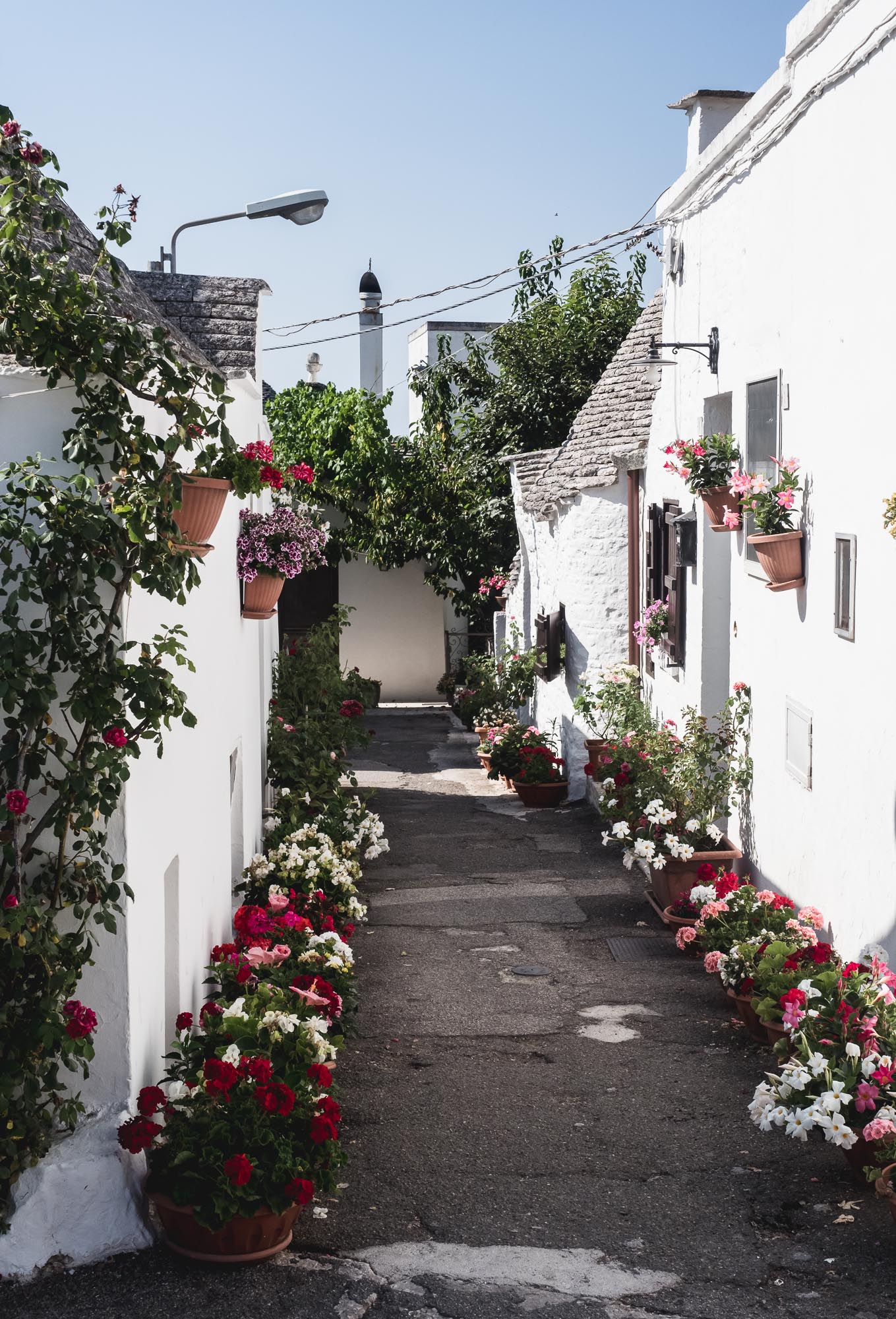
Alberobello
The next stop was Alberobello, famous for its Trullo buildings.
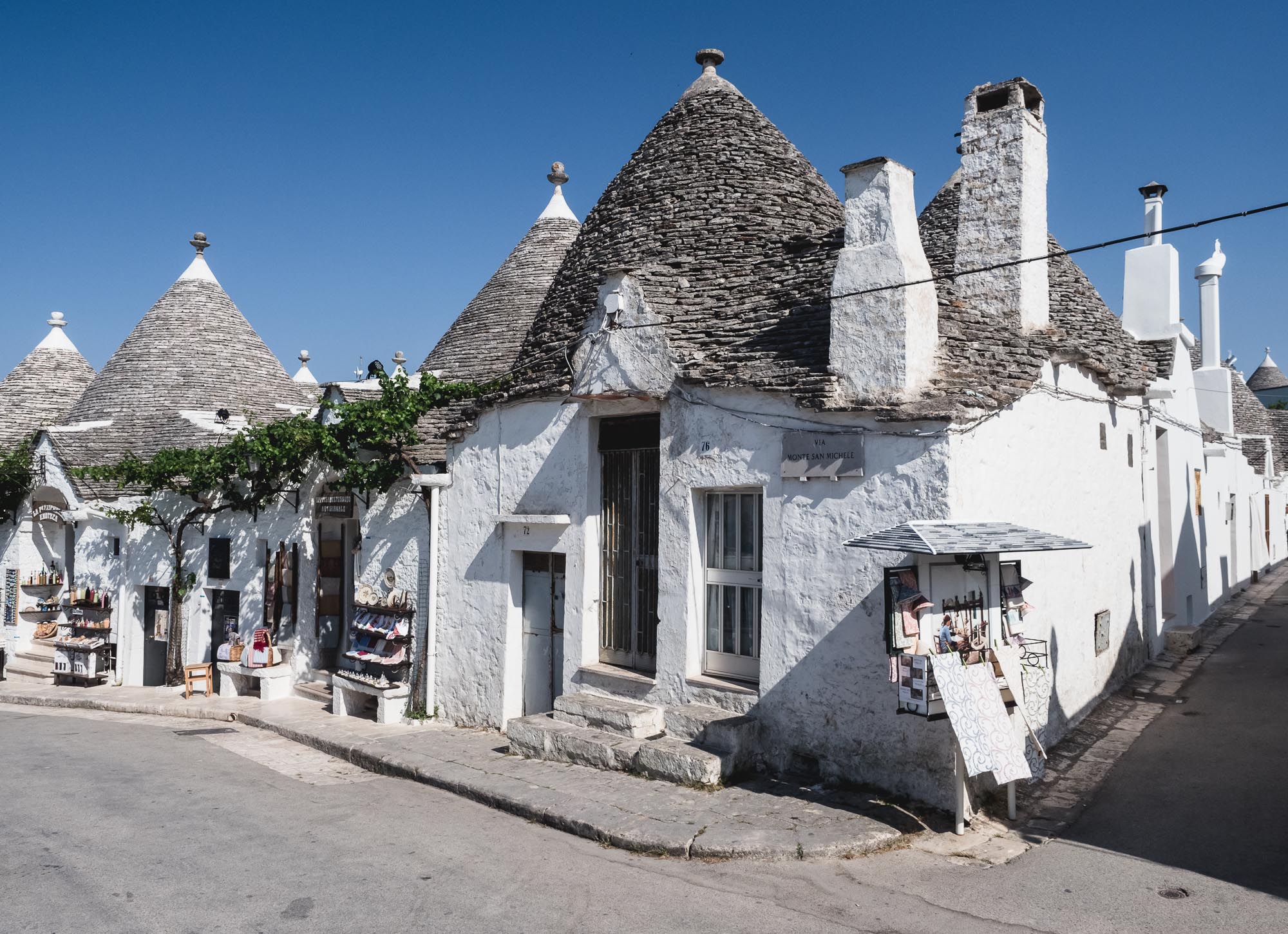
Trullo
The traditional Apulian dry stone hut with its conical roof.

History
Generally thought to be temporary storage or accommodation, these houses have been around for 200 years and more.

Legend
It is said that the houses were made of dry wall so they could be easily dismantled when tax inspectors were in the area, as historically Apulia had high property taxation.
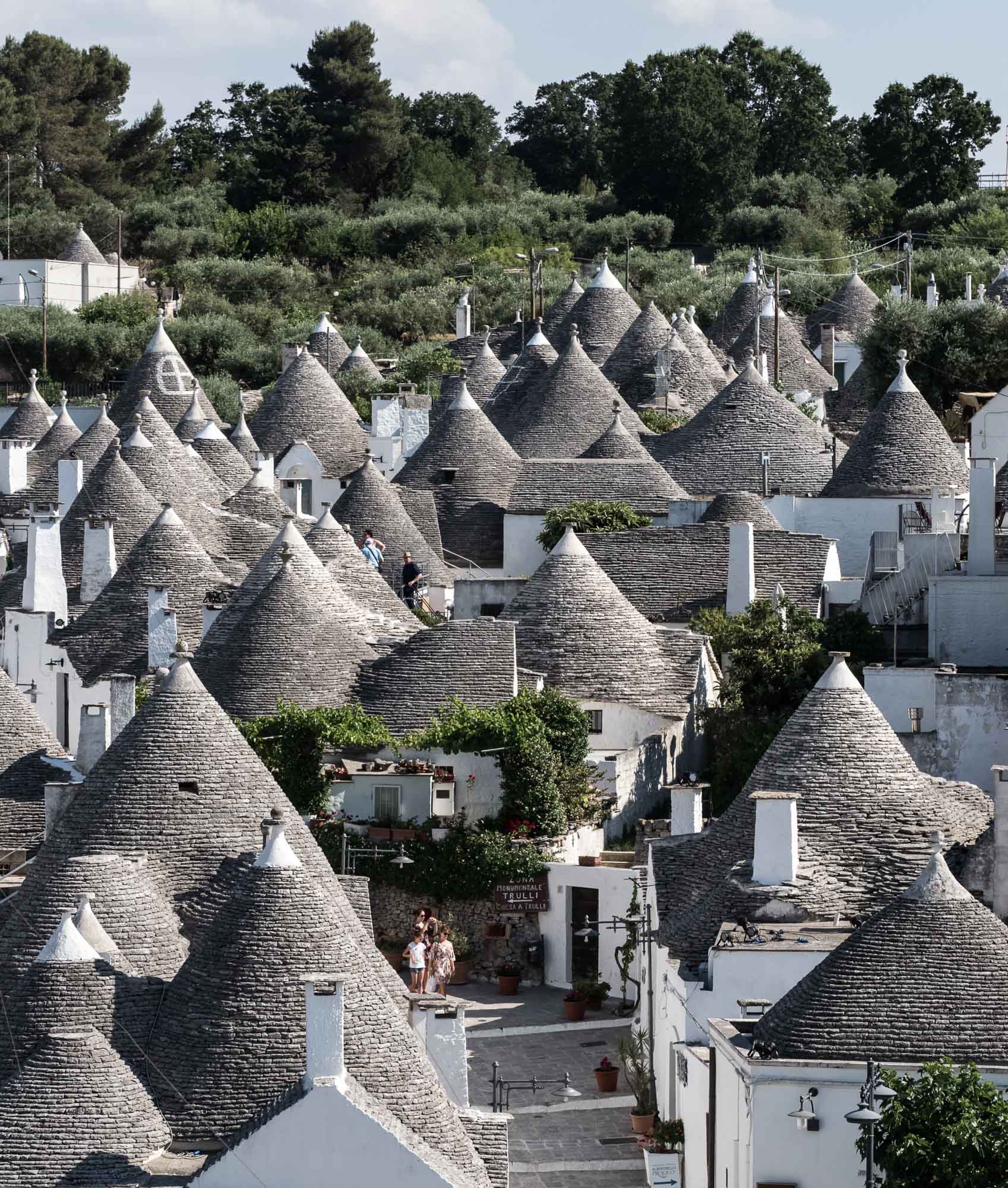
Protected
The area is a UNESCO world heritage site.
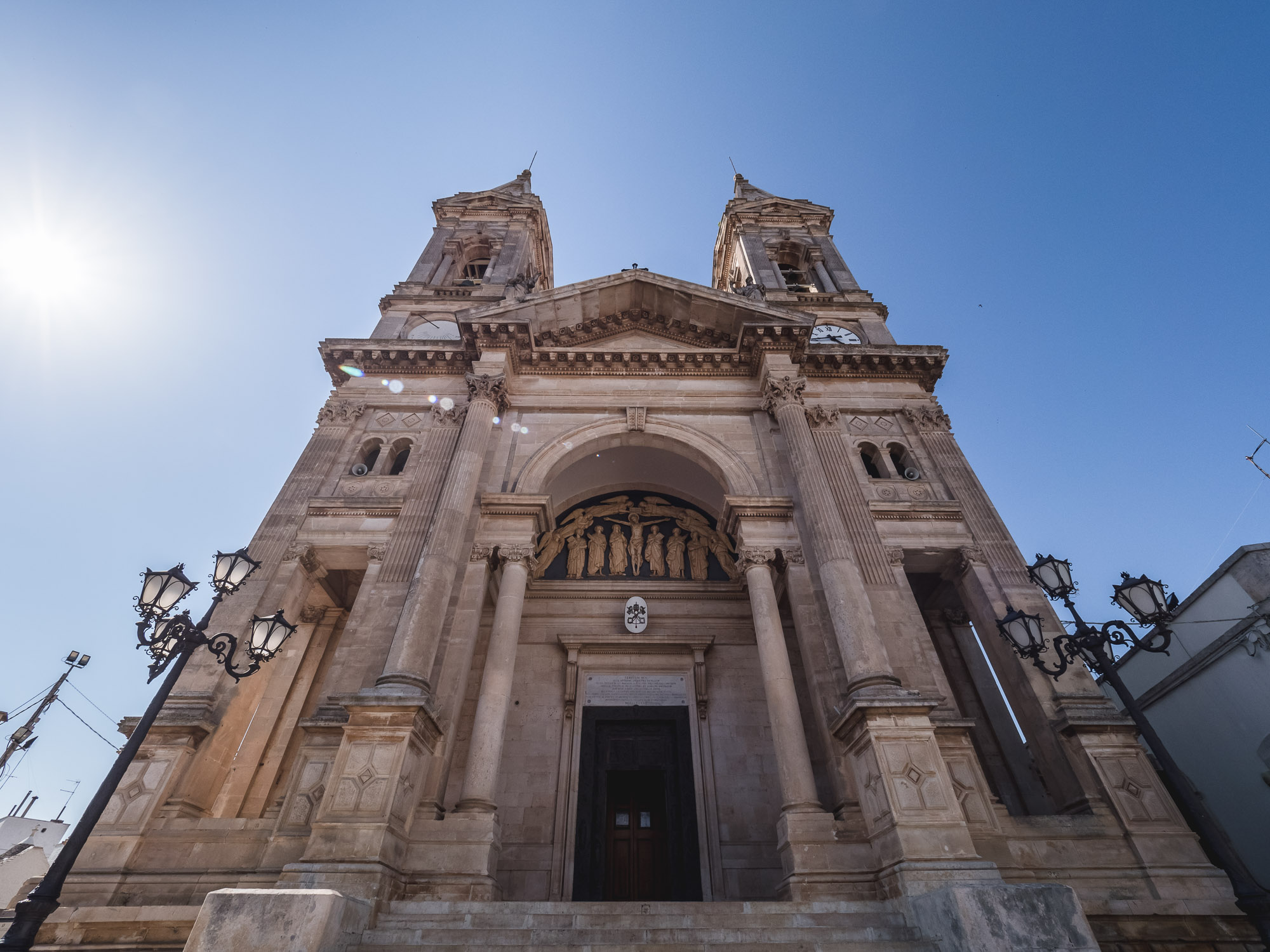
Basilica of Saints Cosmas and Damian
The centre of the religious history of the city.
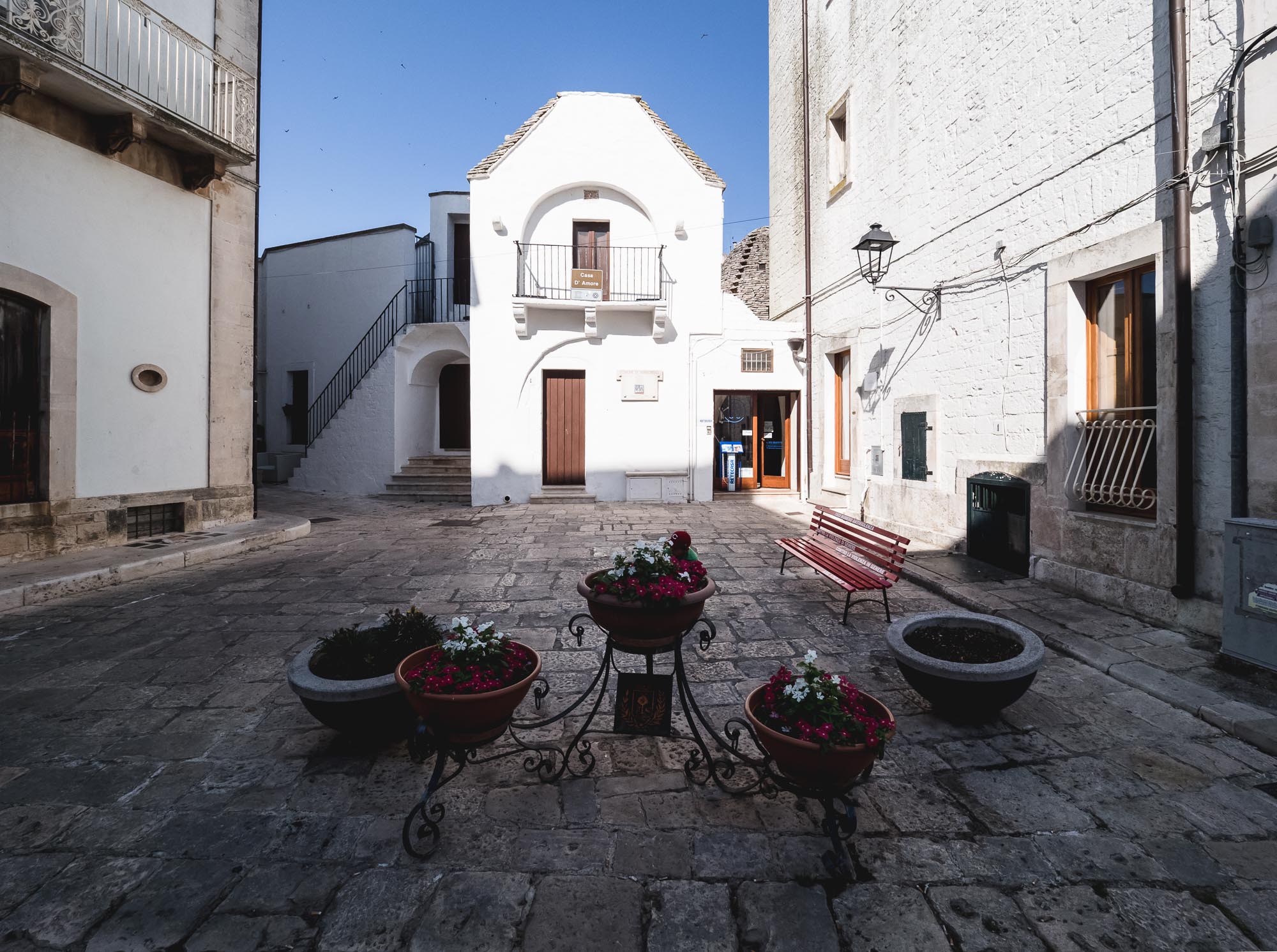
Casa d'Amore
A national monument, named after its former owner, for its role in the victory against the tyranny of the counts in the 18th century.

Conversion
Most of the Trullo houses have been turned into shops, tourist attractions, restaurants and small hotels.

Ostuni Streets
One of the many stairs in the city.
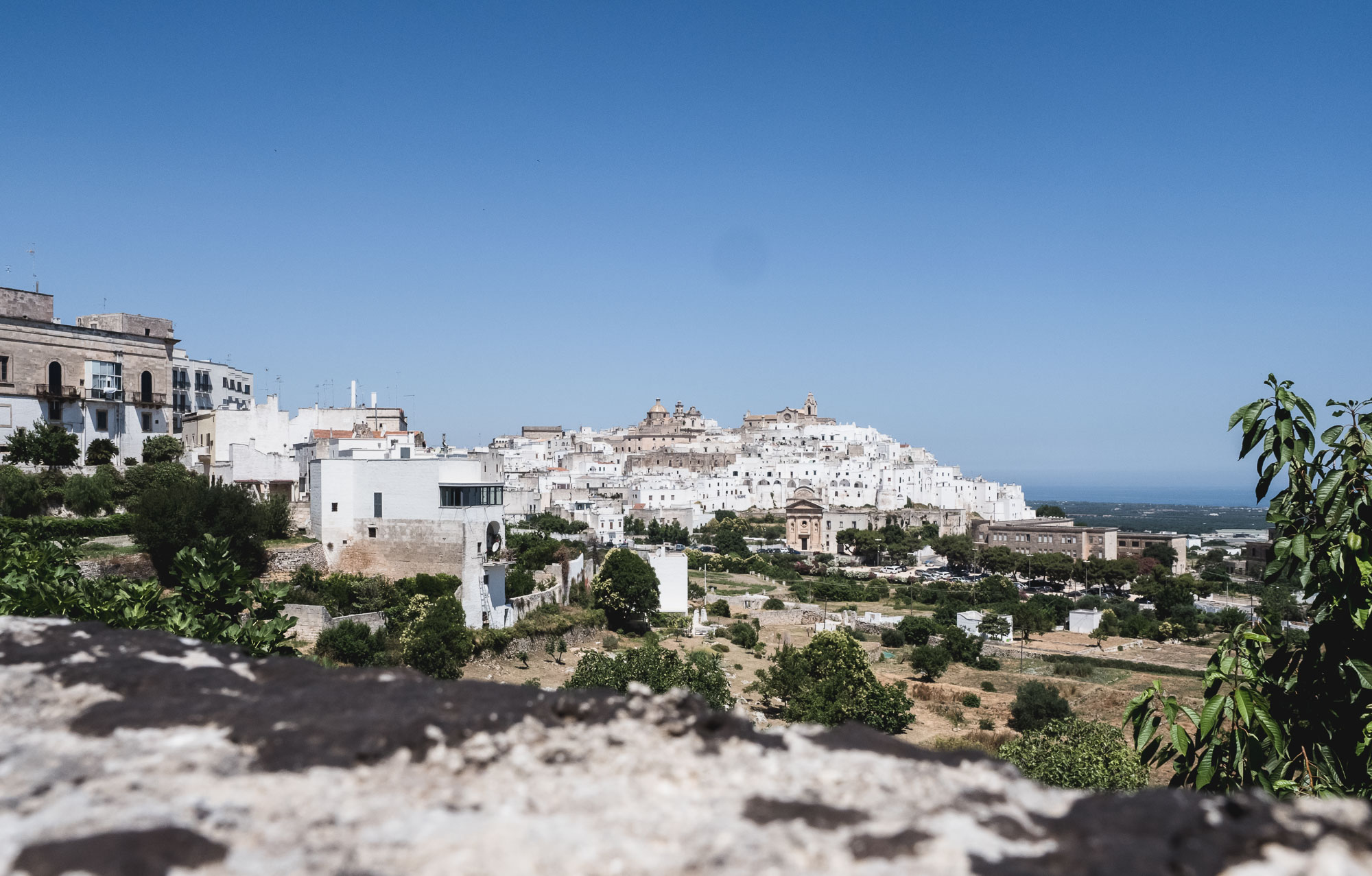
Ostuni
Or aptly nicknamed "The White City"
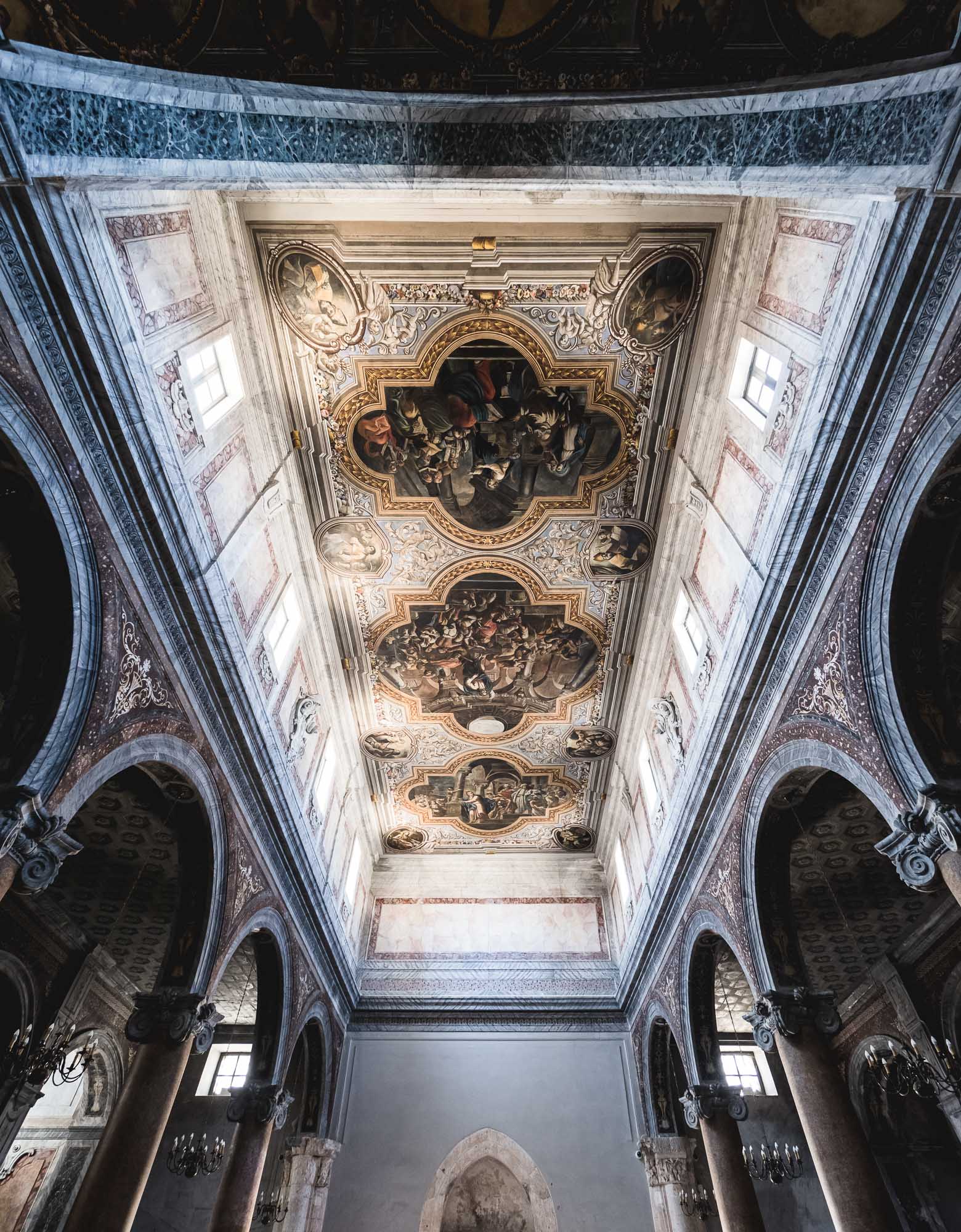
Interior of Ostuni Cathedral
The ceiling creates an impression of additional space beyond the roof.
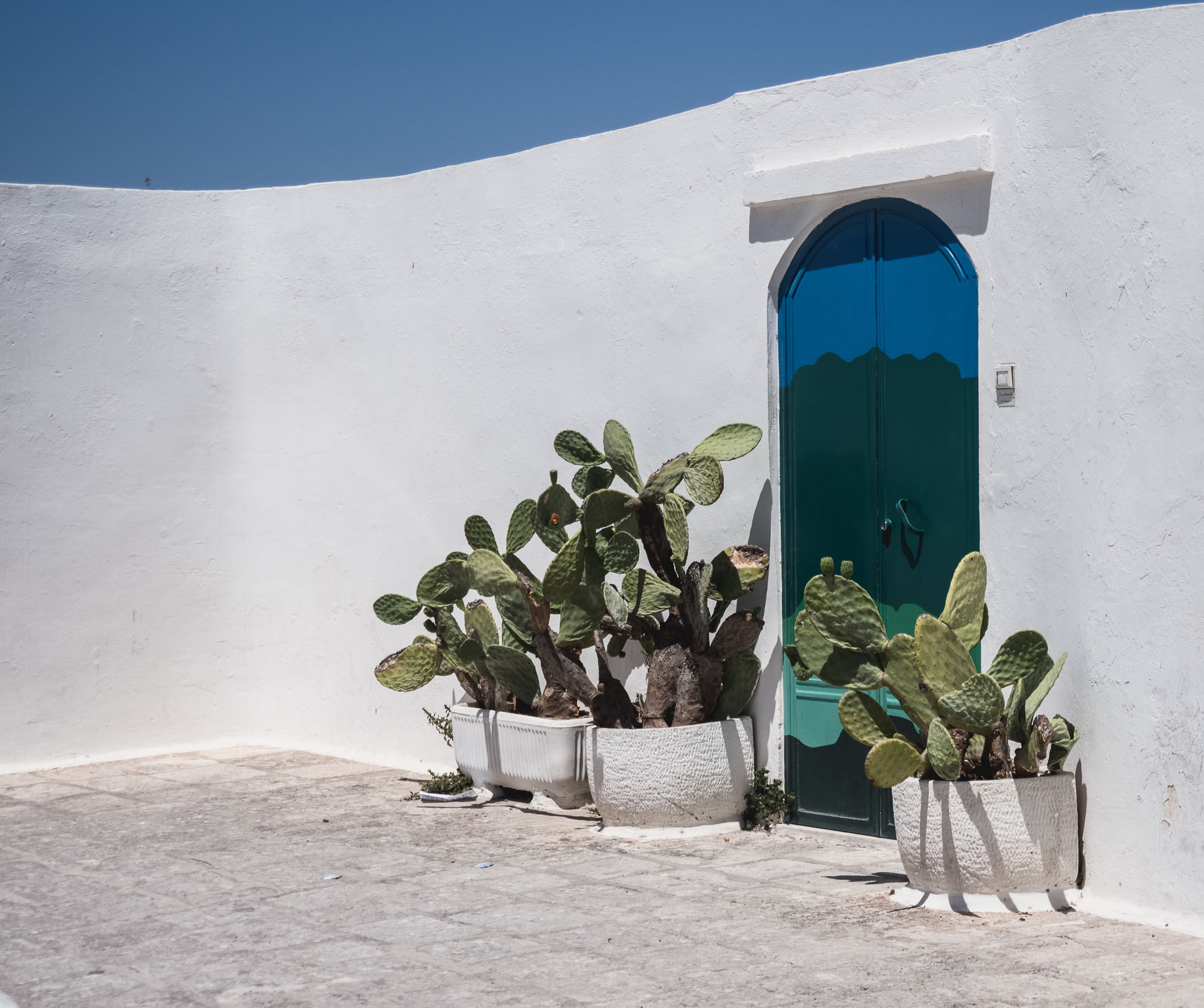
Succulent Door
Typical scene with plants framing doors and windows.
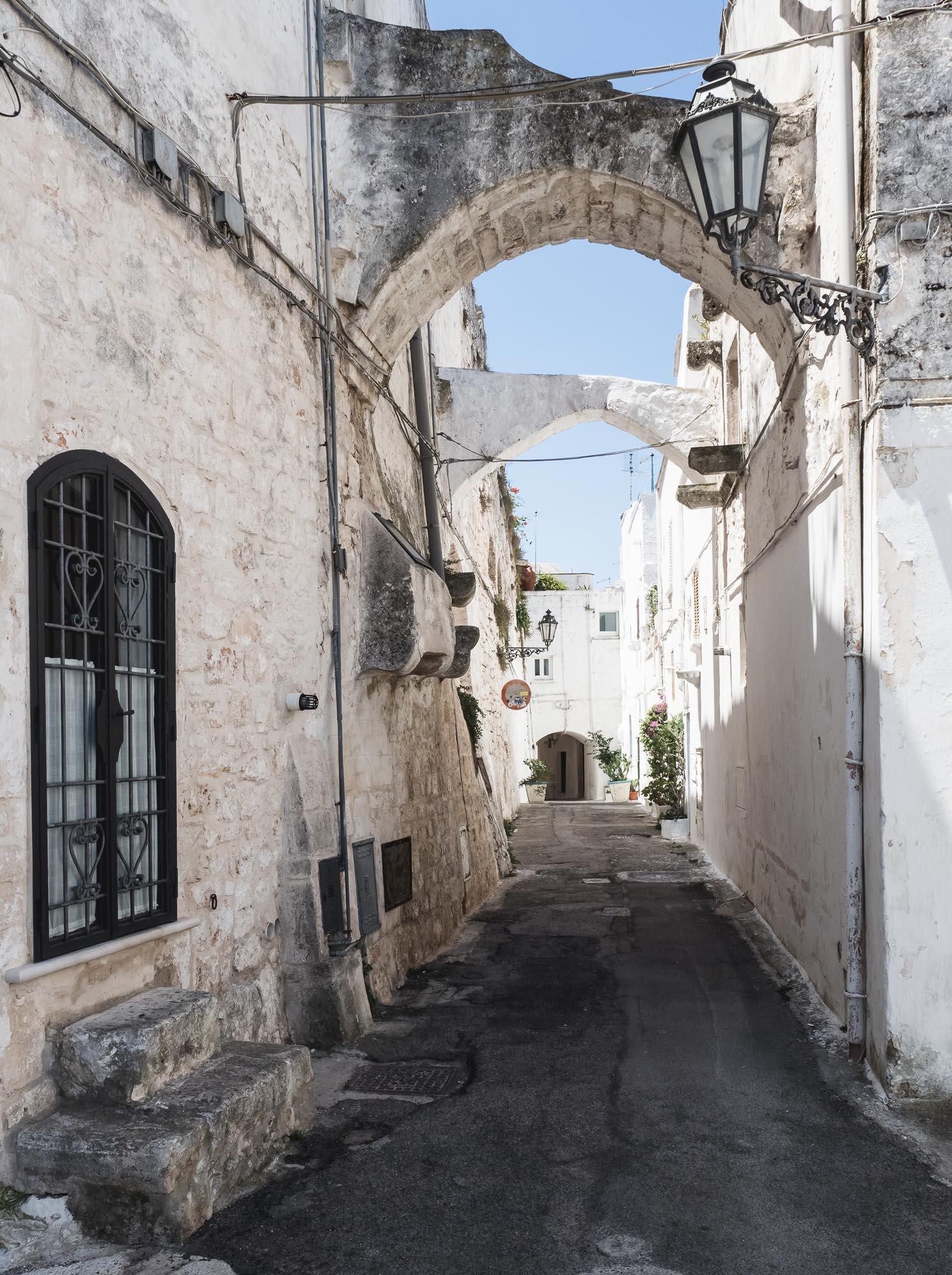
Streets of Ostuni
The arched streets are a typical feature of the city.
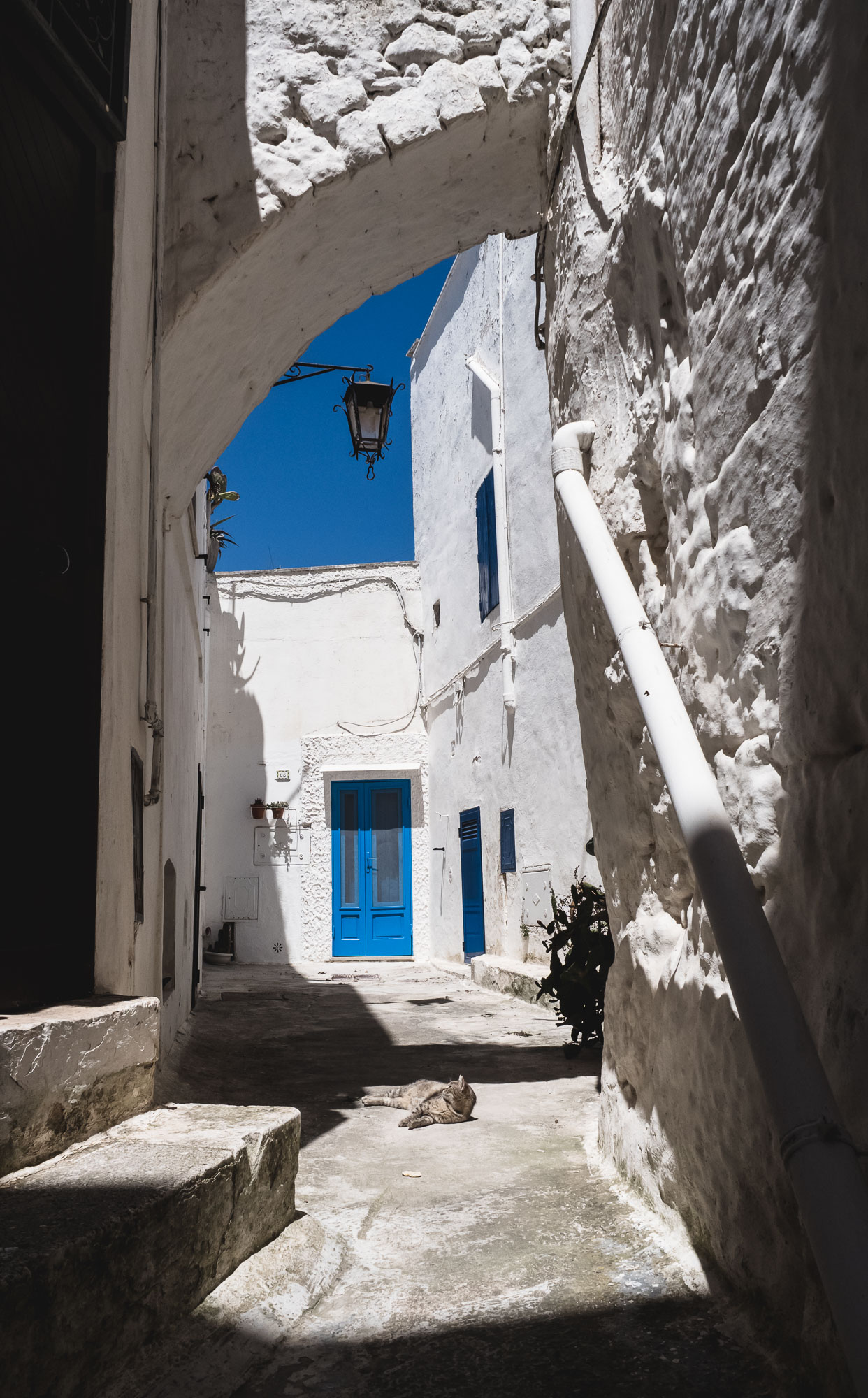
Just Chilling
The life of a cat.

Narrow
Even for humans, this is a one way street.
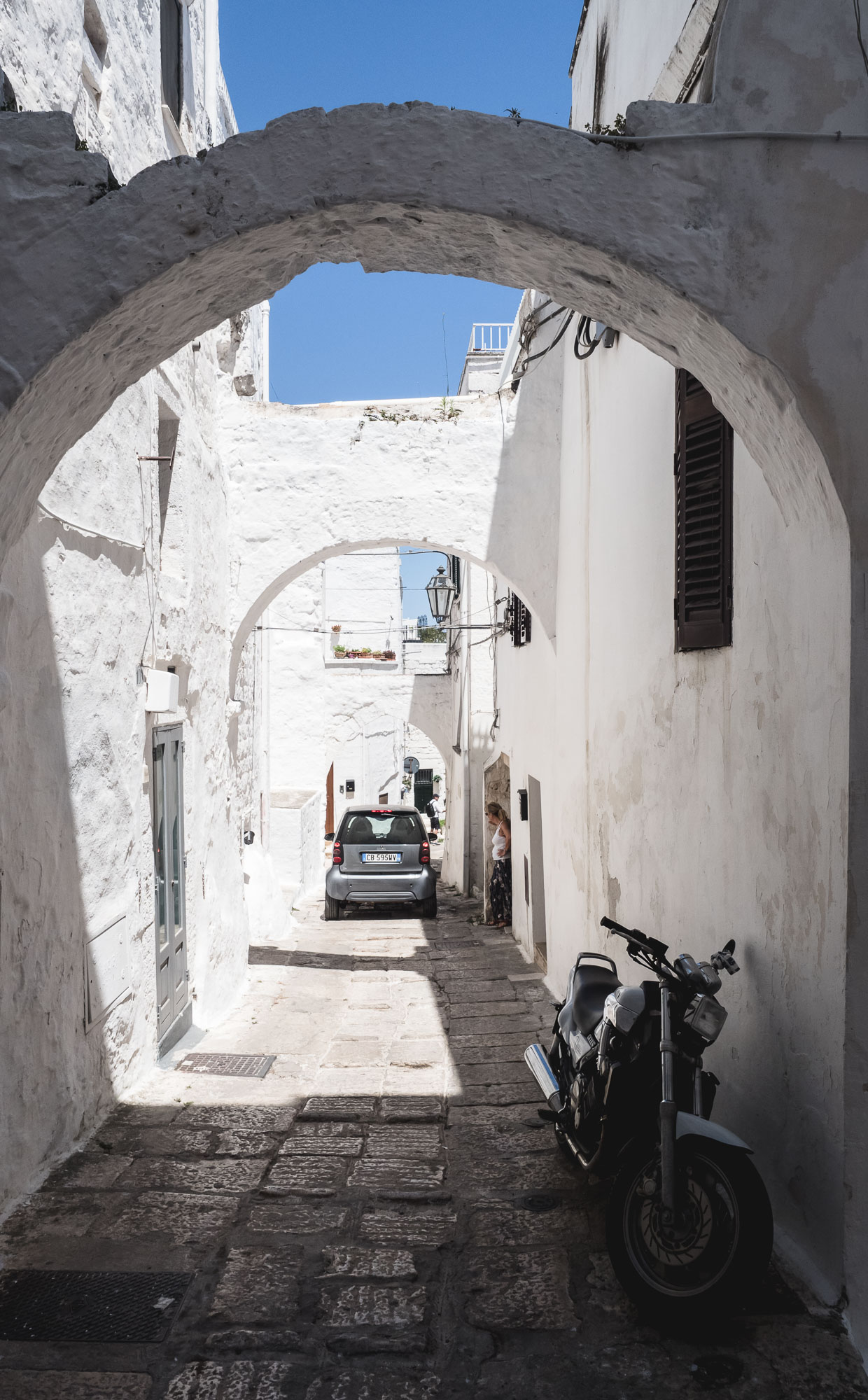
Modes of Transport
Not made for anything bigger than a Smart.
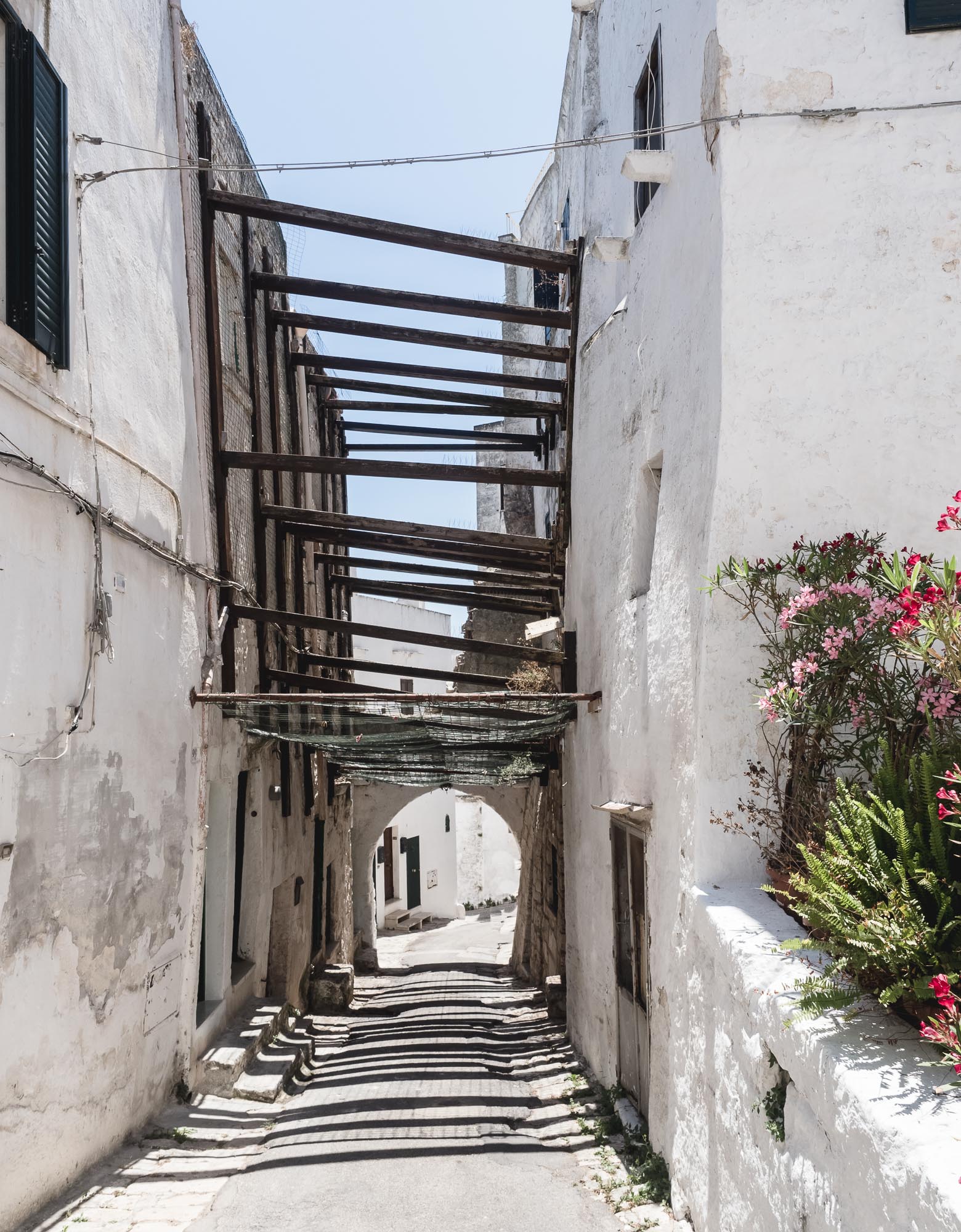
Support
The city was remarkably - and pleasantly - quiet. Not sure it would withstand hords of people.
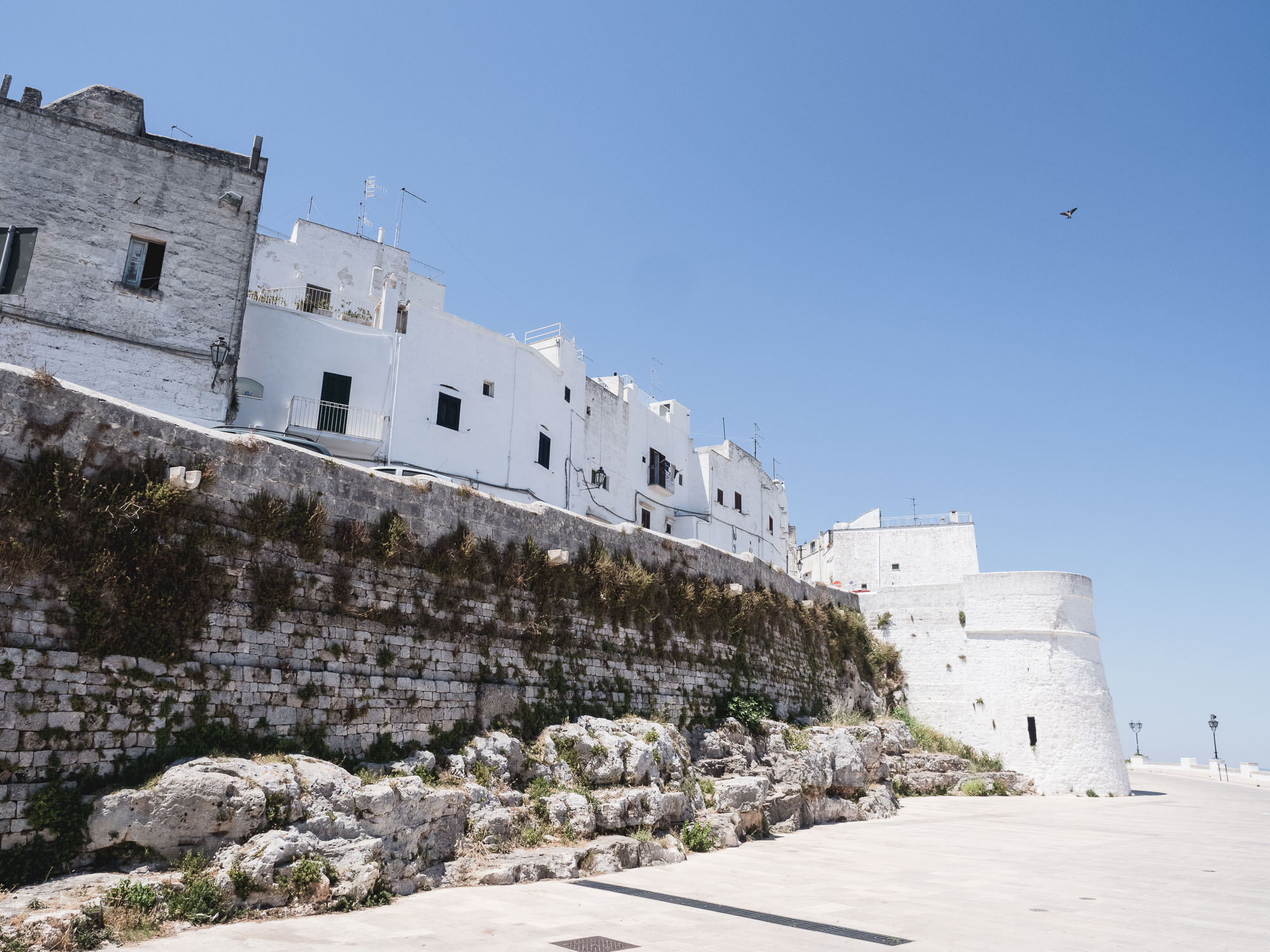
City Walls
The wall surrounding the elevated plateu on which Ostuni's historic centre is located.
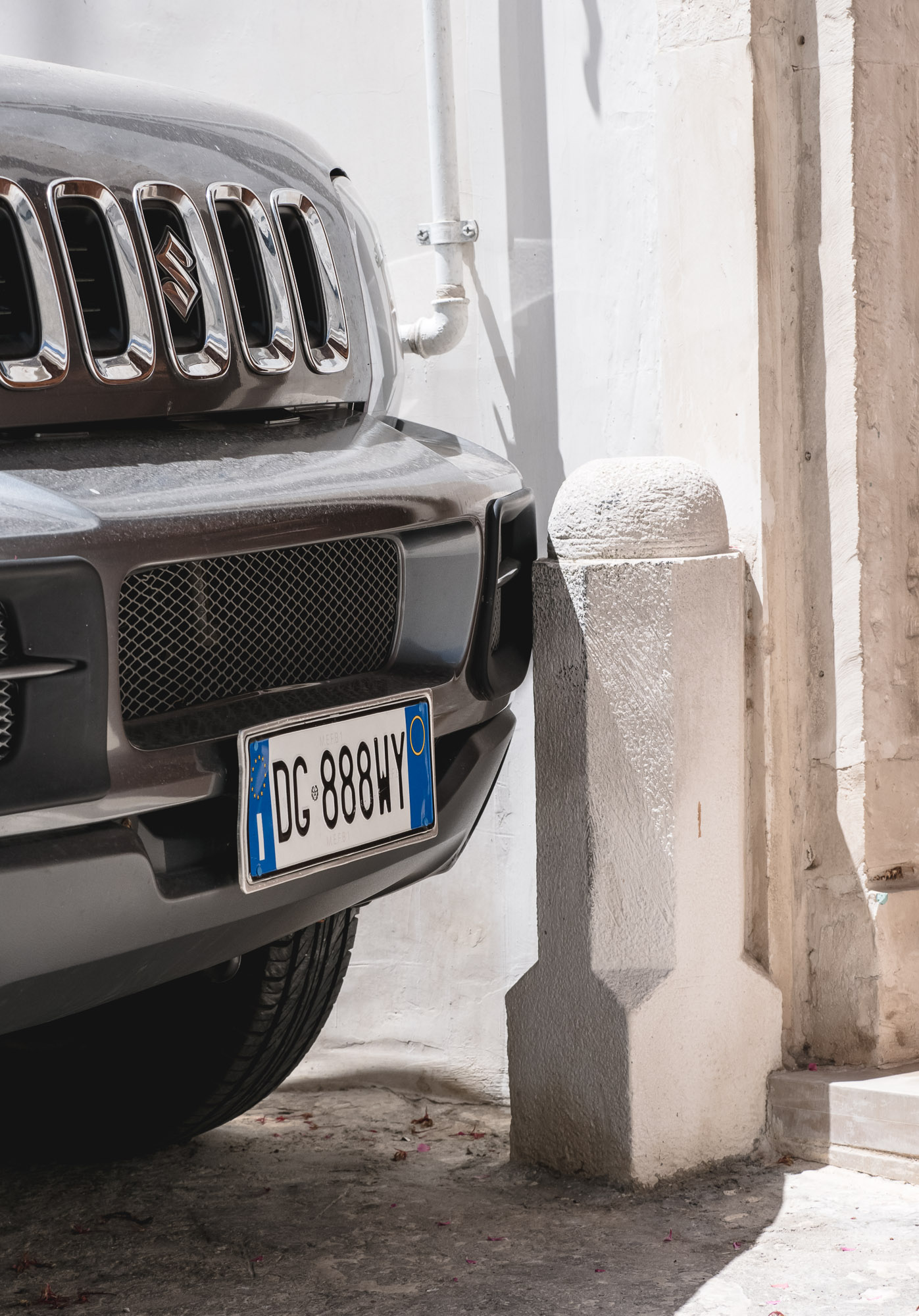
Tight
As I said, not much space for anything bigger than a Smart.

Plant Stairs
Even without a door, stairs must be decorated with some plants.
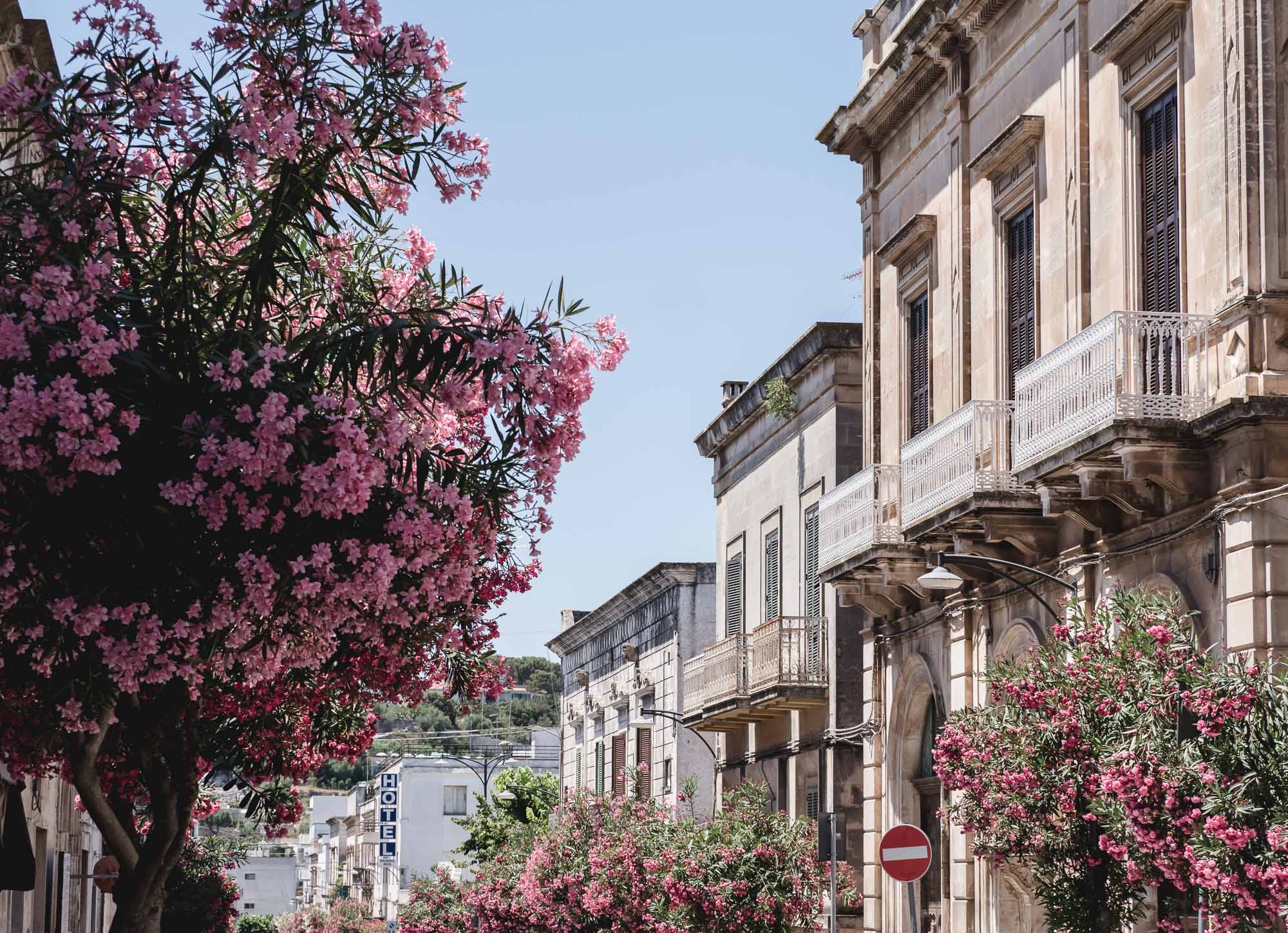
Blossoming
One of the main streets of Ostuni.
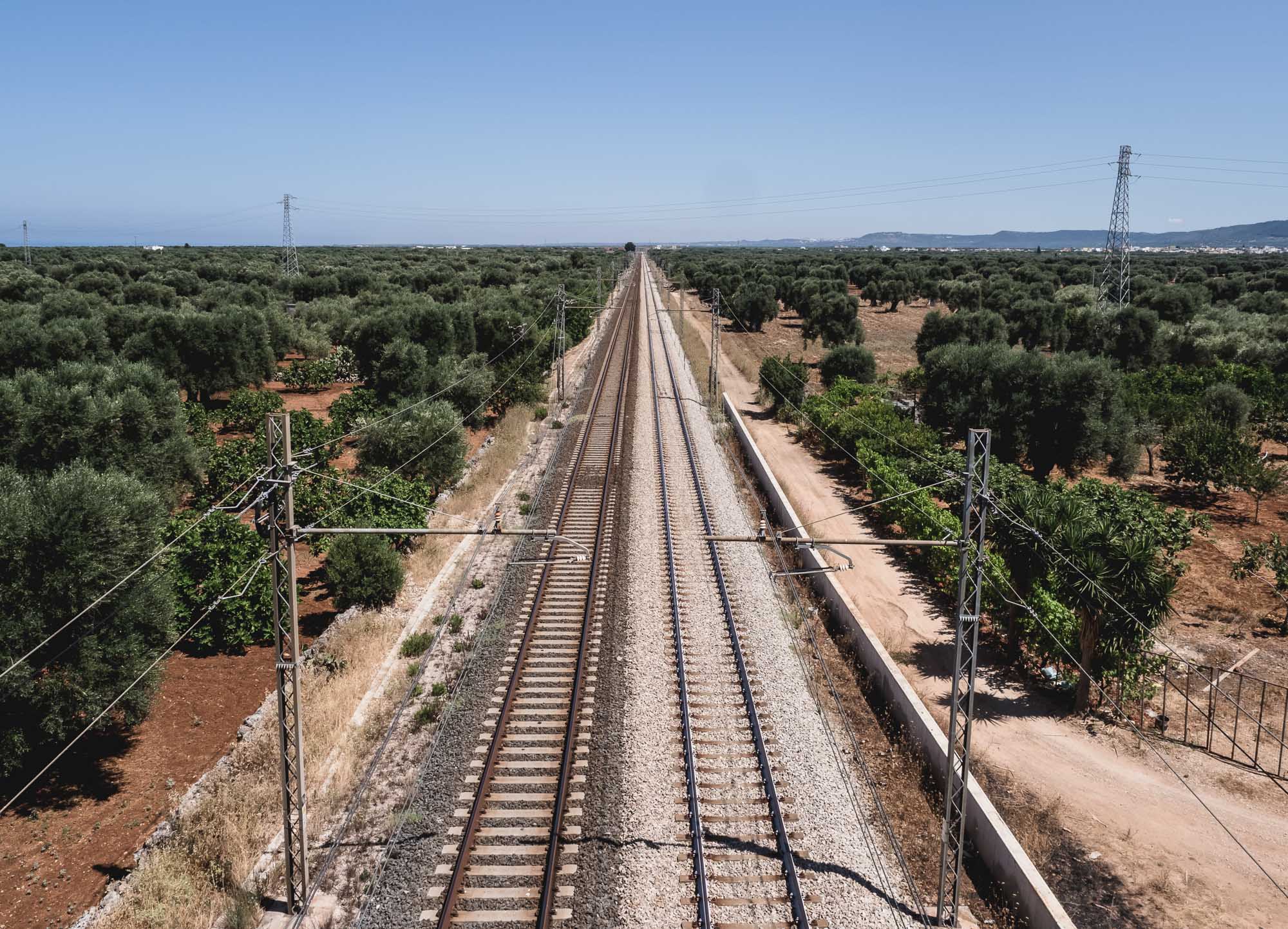
Landscape
Views over the Apulian landscape, with its many olive tree fields.

Towards the Sea
A road leading eastwards.
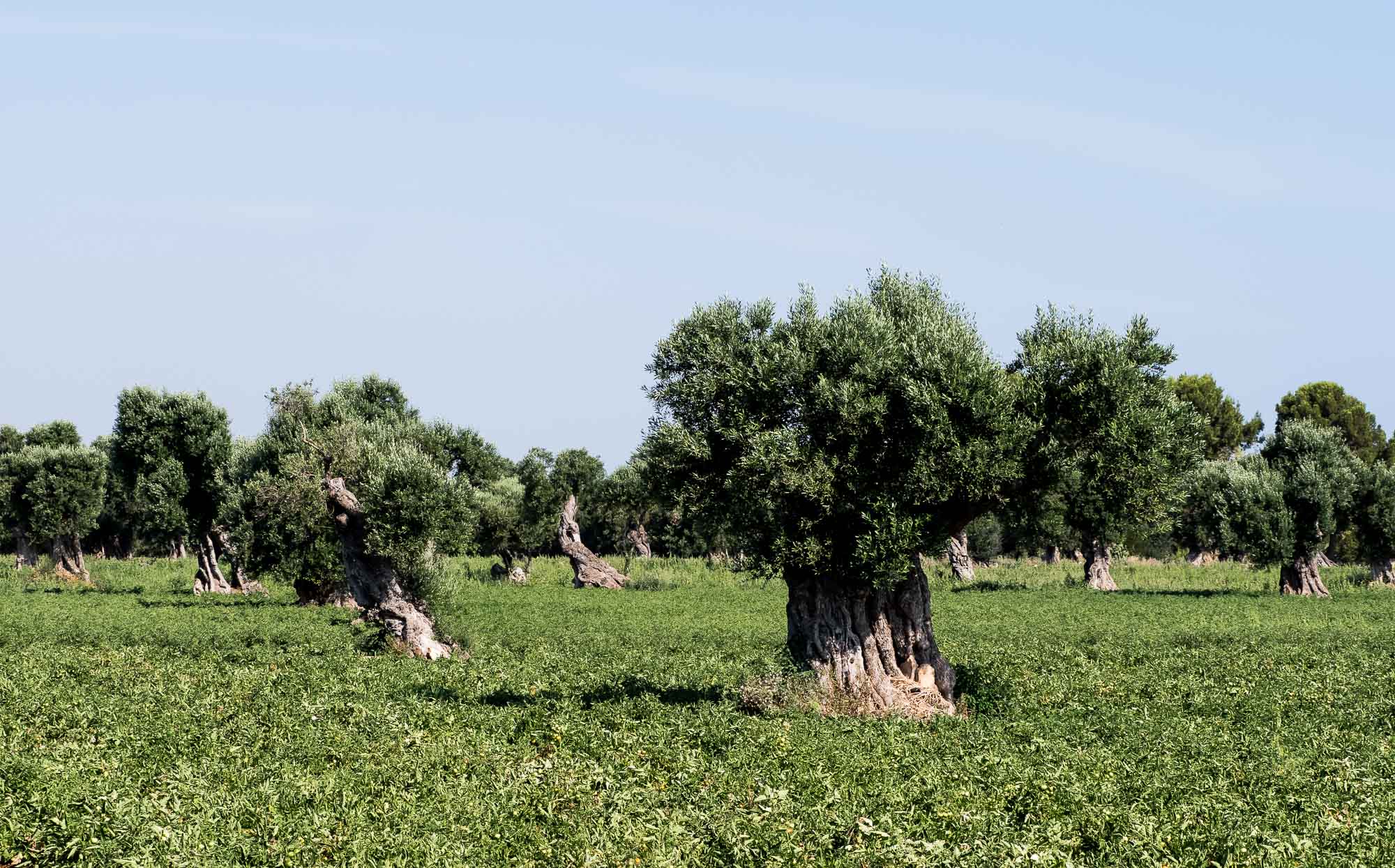
Olive Trees...
It's said that there are over 50 million olive trees in Apulia...
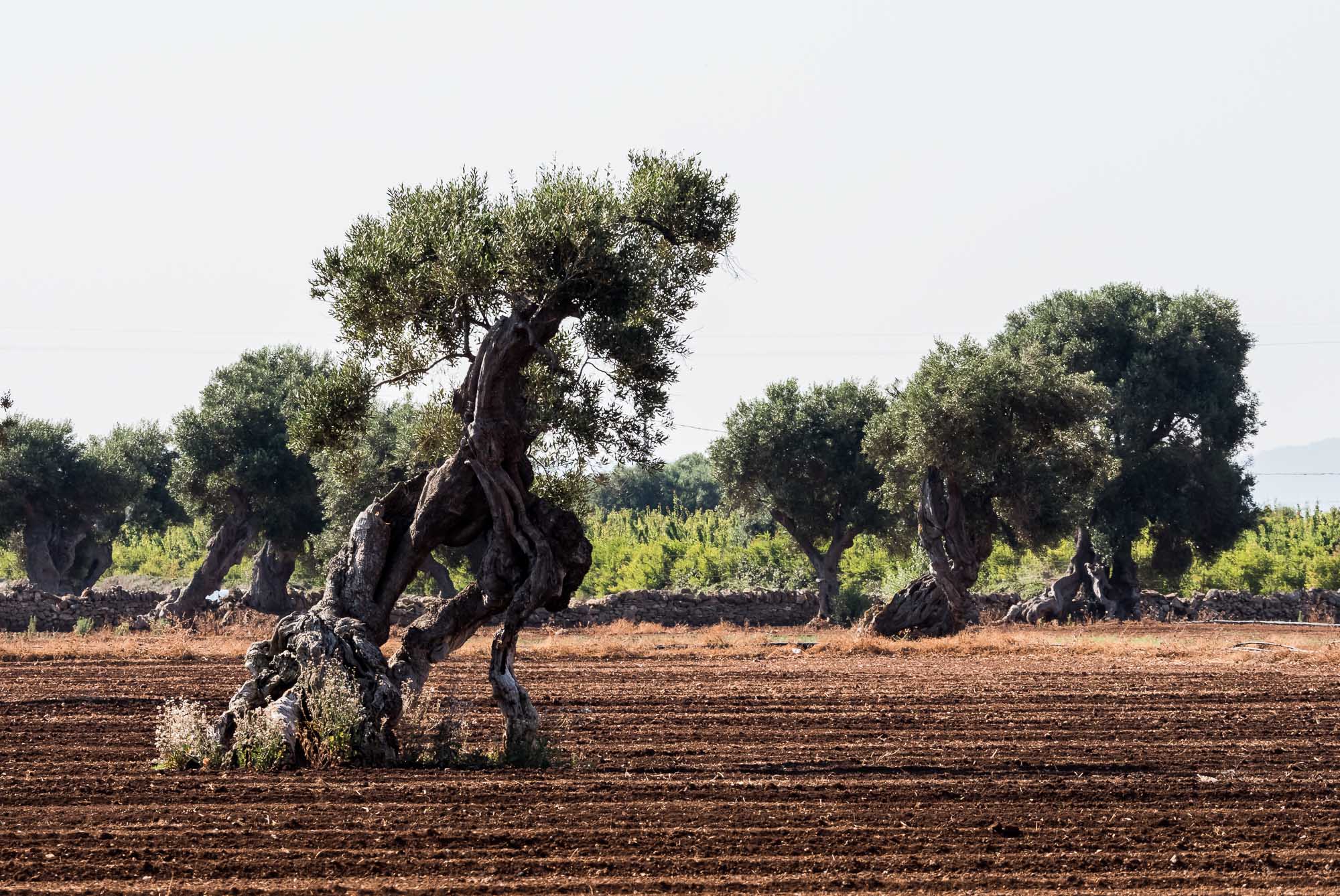
And more Olive Trees
...producing 40% of Italy's olive oil.